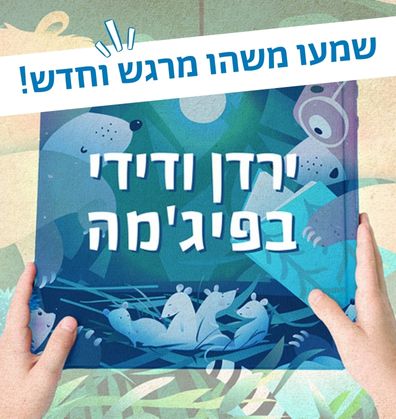מִשְׁפָּחָה וּקְהִלָּה
משפחה
אספנו לכם ספרים על משפחה, ובהם סיפורים על הקשר המשמעותי שבין בני המשפחה; אבא או אימא, סבא או סבתא, אחים ואחיות ואפילו מול הדוד המצחיק והמבולבל . סיפורים על משפחה ופעילויות עם, למען ובנושא המשפחה מסייעים בחיזוק הקשרים האישיים, מעשירים את ההיכרות שלנו עם ההיסטוריה המשפחתית ומעלים בנו זיכרונות, מחשבות ורגשות שניתן ללמוד מהם רבות על עצמנו.
סְּפָרִים
Book-Related Family Activities

טיפ לקריאה: קוראים עכשיו! תכף נשוב
קריאה משותפת היא הזדמנות לזמן איכות משפחתי ומקרב, אך לעיתים קשה לפנות לה מקום בקצב החיים המהיר והתובעני. ביסוס זמן קריאה קבוע בסדר היום המשפחתי יכול לעזור. כמו סבא ועכברה, תוכלו להכריז שעכשיו אתם בזמן רק שלכם ולמצוא פינה שקטה ונקייה מהסחות דעת.

נתינה במשפחה
מה בני המשפחה שלכם אוהבים לעשות? תוכלו לשוחח על הדברים שכל אחד עושה למען האחרים. מי הבשלן של המשפחה? ומי דואגת להצחיק את כולם?
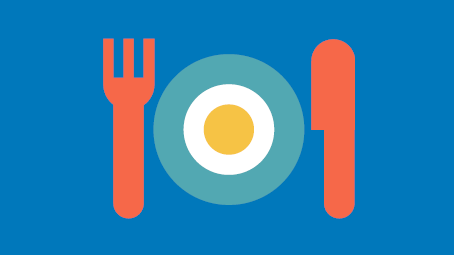
ארוחה משפחתית
ניסיתם פעם לשתות או לאכול כל המשפחה מקערה אחת גדולה? אפשר להכין מיץ ולשתות בעזרת קשים כמו סבא ועכברת או להכין פודינג, דייסה או סלט ולאכול יחד או לחוד.

דין דון מי בא לבקר?
בכל פעם יסתתר אחד מבני המשפחה מאחורי וילון או בד, ולאחר שכולם יגידו “דין דון מי שם?” יֵצא ויחקה בעל חיים, וכולם יצטרכו לנחש מי “הגיע לבקר”.

טיפ לקריאה – בעיני הילדים
לאחר כמה קריאות אפשר להציע לילדים לספר את הסיפור בעצמם לפי האיורים. קריאה כזאת, בפרט בספרים הנוגעים בנושאים רגשיים מחיי היום-יום, מאפשרת לילדים להביע תחושות ורגשות מתוך עולמם הפנימי, ולכם – לגלות כיצד הם חוו את הסיפור – מה הם בחרו להדגיש? אילו פרטים הם הוסיפו?

From the Story to Us
You can look at the illustrations together, notice the children’s actions and facial expressions, and ask: How do they feel? When are they having fun? Are they angry? In your opinion, why does the girl want to be “more”? How do you feel when someone tells you “I’m more”?

Looking for More
Enrich your vocabulary with various adjectives while playing an amusing and challenging game around the house: Pick an item you have at home. Ask – “which is bigger/smaller/more transparent/more colorful…” and so on, depending on the description of your choice. The other player will now look for an identical item that is “more”, such as a larger ball or softer pillow.

טיפ לקריאה משפחתית
מי אמר שחייבים לקרוא סיפור לפני השינה? אולי אתם בכלל מעדיפים לקרוא אחר הצהריים, לשכב יחד על השטיח, או לצרף דובי לקריאה? לכל פעוט אופי שונה וצרכים שונים. כדאי לחפש את הזמן והאופן המתאימים ביותר עבורכם ועבור ילדכם, וליצור את שעת הסיפור המיוחדת שלכם.

מה מסקרן אותנו בסיפור?
כדי לעודד שיח משותף ולגלות מה מסקרן את הפעוטות, תוכלו לבדוק יחד: מה עוד רואים מהמרפסת של יעל? במקום להצביע ולשאול “מה זה?”, כדאי להמתין ולבחון: על מה הפעוטות מצביעים? מה הם מזהים? לאחר מכן אפשר להרחיב, לקרוא לדברים בשם ולהוסיף תיאור – “הכדור מתגלגל” או “הכדור צהוב”.

מי מגיע? ולאן הוא נעלם?
הסיפור מסופר מנקודת מבטה של יעל, אך נקודת המבט של הקוראים רחבה ומלהיבה אפילו יותר! תוכלו לחזור אל הספר, להשתהות בכל עמוד, להתבונן היטב באיורים ולחפש בהם יחד את מי שיגיע בעמוד הבא. האם ראיתם לאן הוא נעלם?

מציצים לרחוב
גם אתם יכולים לעמוד במרפסת או בחלון ולהציץ יחד. מה תגלו בחוץ? נסו לשים לב: האם זה משהו שניתן גם לשמוע, כמו מנוע הטרקטור או ציוץ הציפור? האם זה משהו שחולף ונעלם או שהוא נשאר במקומו? אחרי שהצצתם אל הרחוב, תוכלו לרדת לטייל בו ולפגוש מקרוב את שראיתם מרחוק.

Family Reading Advice
There are lots of ways to enjoy a book – after reading it, you can go back and “read the illustrations”: Which objects can you identify? And which plants?

Every Excursion has its Own Story
You can discuss with your children and remember family trips together – Where did you travel? Did anyone get upset on the trip and you helped them? Do you also have a story about an item that got lost while you were on a trip? Or perhaps you also helped to protect the environment?

Searching in the Water
This book can inspire you to play an entertaining quest – fill a large bowl or bucket with water, then add soap so that the water will not be clear and transparent. Now slip in all sorts of small objects: A teaspoon, bottlecap, pebble, coin, or any other item. Ask your children to help you find the “lost” items in the water.

What is it like to have Blurred vision?
If you wear glasses, you know how it feels. Now you can let the rest of your family experience what it feels like: Place baking paper or a thin, light-colored fabric on your eyes, and try to see through it. Look around and at one another – what is different? How do you feel?

Childhood memories
The grandfather’s friends tell his grandchild about the boy his grandfather once was. Take a moment to share with your child too about the childr you once were, what you liked to do, what you miss, and share childhood photographs. You can also ask your child: What would you tell about yourselves when you were younger? What memories are particularly joyful or moving?
A song from the land of childhood
This book can inspire you to introduce your child to songs that remind you of your childhood or the place where you grew up. You can listen to old songs together and ask: Do you also have songs that remind you of things?
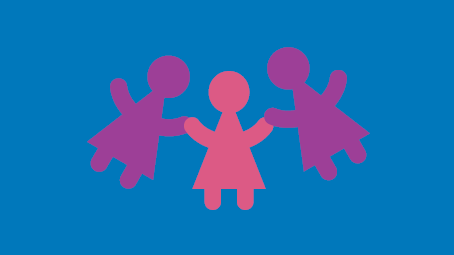
“Buenos Dias”
When the grandfather and father in this book speak to one another in Ladino, the child feels as if they are sailing away together to a faraway land. It is very exciting to understand, know, and utter words in a foreign language. Throughout the book, words and phrases appear in Ladino; you can go back and look for them in the book, then try to pronounce them together, and look .up their meaning

QR code
Scan the QR code and listen to the book Trees Waiting for Rain on the Sifriyat Pijama podcast. We recommend following along with the book while listening.

By which to remember where you came from
After reading this book, you can discuss the importance of family. Share memories of intimate and special moments shared with grandparents. You can discuss your family’s roots, cuisine, and culture, as well as any heirlooms and items that are passed in your family.
My Own Special Reminder
Do you also want to have an item to remember things by and help you overcome difficulty and loss? You can use beads to make a necklace or bracelet, paint a pebble, or any other good idea, and then decide what to do with this it to be reminded of something or cheer up: Twist it? Squeeze it? Stroke it? Move it to your other hand?

Homemade Cookies
Which cookies remind you – the parents – of your childhood home? This book can inspire you to bake cookies together, or prepare any other dish that connects you to your roots, family, and home.
Listen to the Story
Listen to Yarden and Didi tell the story of Shoham’s Bangle on the Sifriyat Pijama podcast.

Arts & crafts, songs, and other activities can be found on the Sifriyat Pijama Pinterest page.

Family reading advice
This is a special book about a special family, in which one brother is visually impaired or blind. The narrating brother is well aware of the challenges in his family and the restrictions required of him at home, yet chooses to see the world in a positive light. We suggest that you, parents, read the book before reading it together to adapt the reading and discussion to this book’s unique contents.
Discussion
Do you think the child in this story is lucky? Why? What makes you lucky? You can share with one another, parents and children, the good things in your shared life as a family. You can create a regular ritual during which, once a week, family members share the positive things that they experienced that past week.
What can you see…?
How do blind children experience life? Scan the code to watch an episode of “I’m sorry for asking” about blind children. Following the video, you can discuss what makes our lives similar to or different from that of the children depicted in the video.

What do we discover when we reread?
Rereading can reveal new and surprising things. We recommend reading the book twice, looking at the illustrations and searching for clues about Hagay’s visual disability: What about the words and illustrations hints at this family’s challenge? Did you notice it the first time you read the book?

Make believe
Hagay knows how to tell made-up stories. You can try it too! How about choosing two items and using them to tell a made-up story: a brush and a rug, a bottle and a stuffed cat, a hat and a window – what can happen to them in the made-up story you will come up with together?

More arts & crafts and activities can be found on the Sifriyat Pijama Pinterest page.
Family reading advice
Simachi’s Big Day is a long book. We therefore recommend reading it in two parts, pausing at the point where Simachi wonders why her brother, Avram, is dressed in his best clothes, and reading the rest the next day.
Memories
In this book, Grandma is recalling her childhood memories. This is your chance, as parents, to share special moments from your own childhoods too. Talk about the things you did, those you never thought you would do, or the relationship between you and your siblings. Ask your children: Can they recall special things they did and, looking back, surprised them because they made them discover their own abilities?
Listening to Simachi
What does the story sound like? Scan the code and listen to the story while looking through the book.
A pineapple on my head
Avram and Nemi play a game by walking with a pineapple on their head and seeing who lasts longer without dropping it. You can also play a similar game: choose an item that you can put on your head – a pillow, toy or box, and find out: Which of you can walk while keeping it on your head? And how far?
Following the sea
The book describes many seaside activities: the fish moving, rowing, swimming, bringing fishnets in, sailing or flying a flag on the boat’s flagpole. You can choose one of these activities, and mime it. Your family will need to guess which activity you meant, and look for it among the book’s illustrations. Good luck!
Pesach trivia
What are the three things you would have taken with you when leaving Egypt? And who can leap like a frog from the second plague? Scan the code and you will be able to print out an amusing card game that will enhance your Seder Night experience.
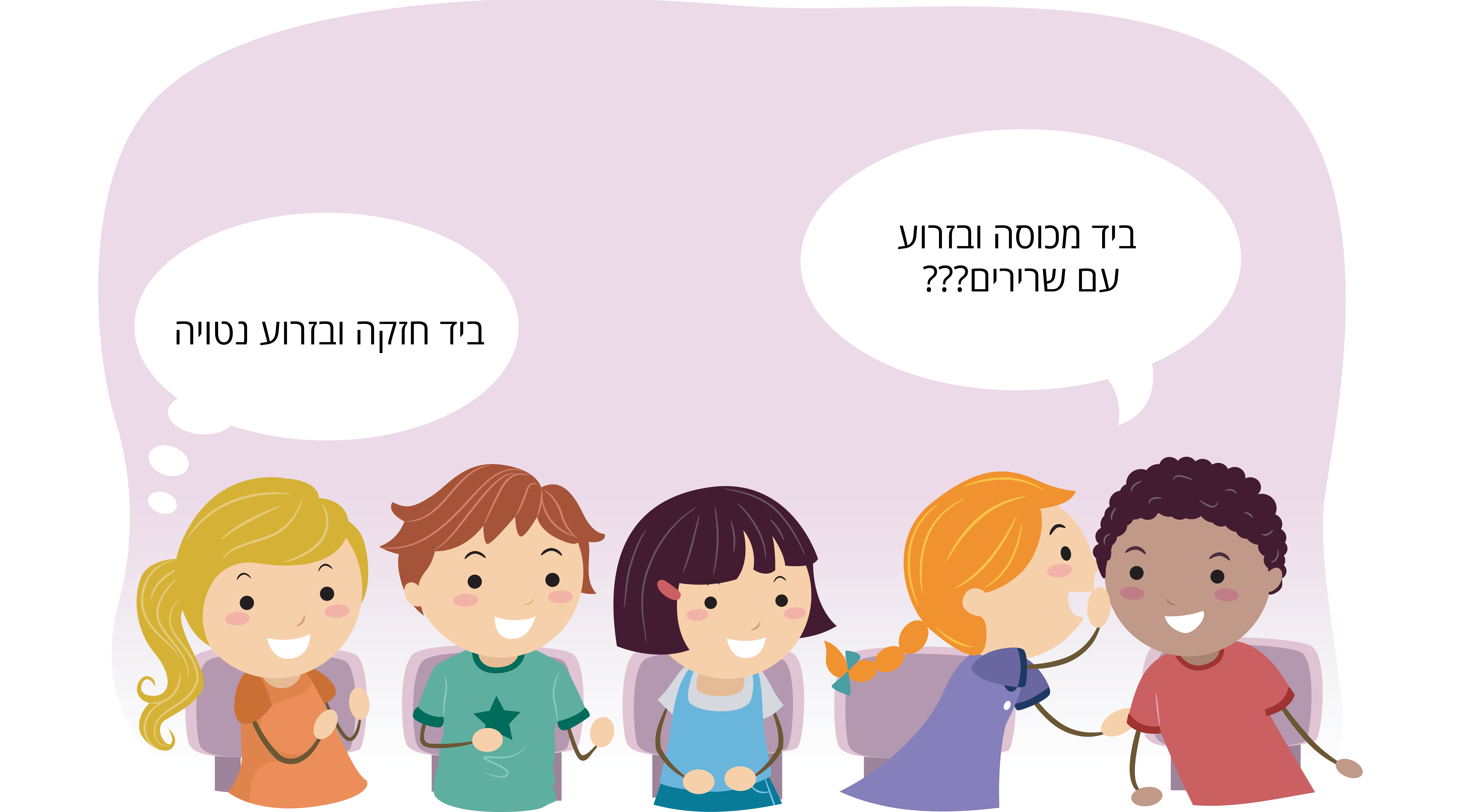
Hide and Seek
You can hide the afikomen or any small item and ask family members to look for it. Is it in the kitchen? Under the couch? Perhaps in the closet? In the next round, the one who found the item will hide an item of his or her choice, while the others go looking for it… Good luck!
Pesach activities
This book offers parents the opportunity to tell their children about their childhood Seder Night experiences: Did you hide the afikomen? And who found it? What did you like about Pesach as children? And what do you like about it now – parents and children?
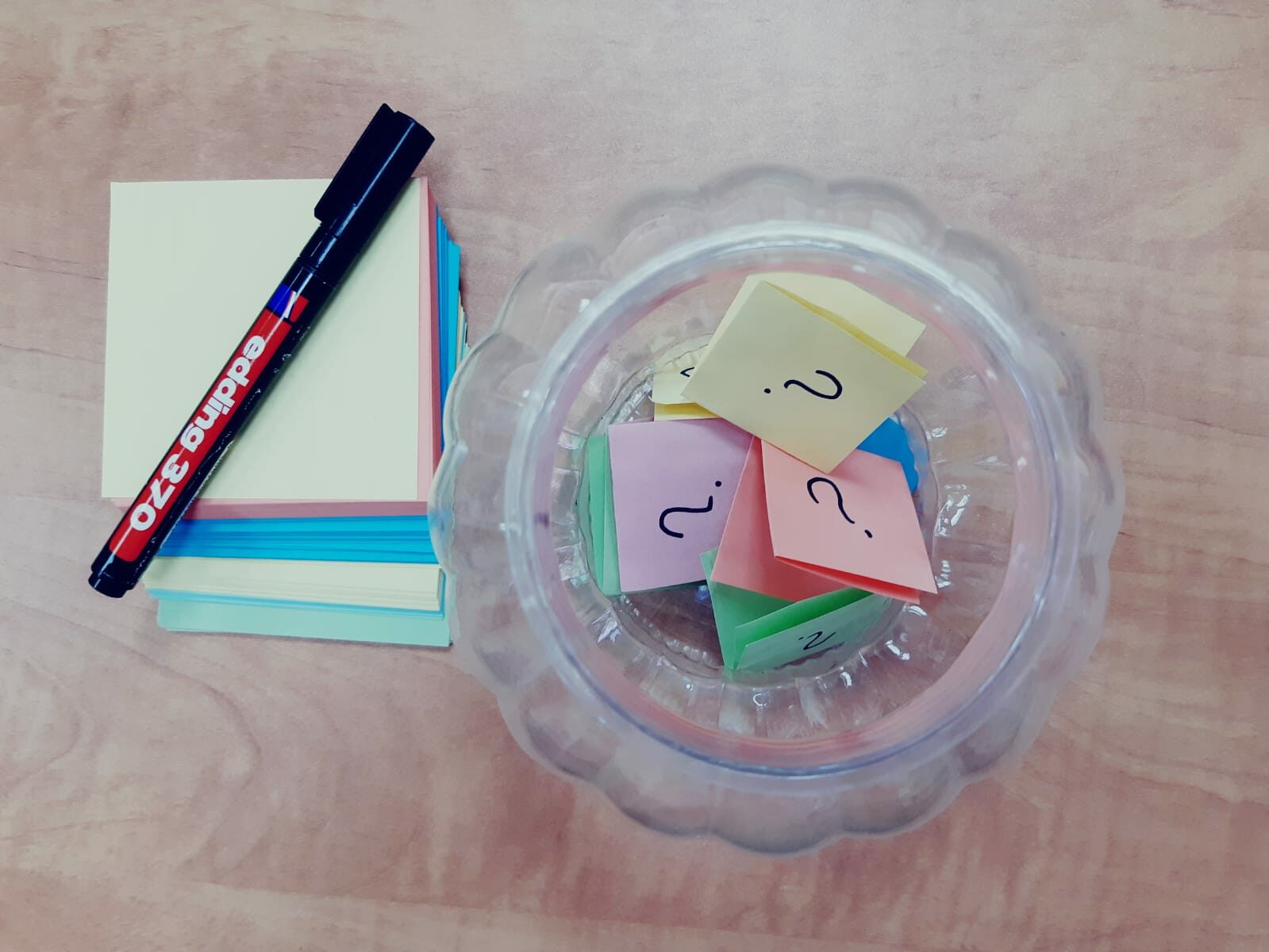
Where is the frog?
A small frog is visiting for Seder Night wearing an ancient Egyptian headdress. Can you look through the illustrations and find it? Why does it appear in the illustrations, in your opinion?

Family reading advice – Books everywhere
Like many toddlers, Berale also asks Grandma – “What are we going to do now?”. Among the surprises Grandma keeps in her basket is a book that they can read whenever they want. A book is a world unto itself that can be taken anywhere quite easily. You can also keep a book in your bag, and enjoy it while waiting for a doctor’s appointment, relaxing in the park, or taking a long car ride.

Discussion – Special times with loved ones
You can discuss your toddler’s relationship with Grandpa, Grandma, or other significant family members and ask – What do you enjoy doing together? Are there any special activities that you only do with your grandparents or uncles and aunts? Are there any special items that only they have at home?

A made-up story
Grandma’s stories make Berale laugh because they are made-up, and unusual things can happen in our imaginations. Try making up your own story, like “The Hippo that Fell into a Soup Bowl”, “The Lion Who Was Afraid of Being Left Alone at Night”, or any other idea that comes to mind. You can start with an object you see around you, and take it from there.

Grandma baked a cake…
Do you know the fingerplay that accompanies the nursery rhyme “Round and Round the Garden”? Or the Israeli version “Savta Bishla Dasya” (“Grandma made some porridge”)? You can play a similar game by bending your fingers inwards and leaving your thumb out to create a ‘snail’. Your toddler’s upturned palm can be the bowl. Now say: “Grandma and Berale baked a cake. They added flour, they added sugar, they added eggs…” while touching your toddler’s upturned palm with your thumb as you name each ingredient. You can take turns being Berale and the mixing bowl.

Reading-assisting touch
Toddlers need physical contact. That is why you should sit close to one another while reading, hug, touch, and look into each other’s eyes every once in a while. That way your toddlers will experience story time as a warm and relaxing activity that makes them feel loved and safe.

Tickles and games
You can ask your toddlers – do you like tickling games? Which of the games that we play together do you enjoy? What would you have liked us to play? In relation to the mother’s telephone call in this book, you can also ask – how did Gan-Yah feel when her mother went to answer her phone? How do you feel when you have to wait?
There’s a hill in this house
You can play the same game they play in the book: Your toddler or another family member can hide under a blanket and become a hill. You can tickle the hill, feel it and search – where’s the hill’s foot? Where is its head?
*Some children are hypersensitive to touch or tickles, and therefore, it is important to remind players before the game that one can say “stop” at any point, just like they do in the book.

Moving together
There are many body movements in this book. You too can jump, dance, roll or lift your legs up in the air just like the hill does. You can look at the illustrations and copy Gan-Yah’s movements too.

For more ideas for activities, check out our Instagram page and discover more surprises.

With an open heart
Following Yonatan, you can discuss and share: What can be the meaning of the phrase: “to open up your heart”? Is there an image or item that reminds you of loved ones, and make you feel like your heart is opening up and your feelings are welling up?
QR code
Would you like to listen to The Key to My Heart? Scan the code and you can listen to this book together

Where have I been and what have I been up to?
Thanks to the lost keys, Yonatan gets a glimpse into his father’s daily routine. And what did you do today? You can play charades, miming to one another a place you have visited or something you have done. Take turns acting out a place or action, while the rest of your family tries to guess where you have been and what you have been up to.

Details in the illustrations
Yossi Abulafia’s illustrations are full of details. You may want to stop and look: Which animals can you find in the illustrations? Do they appear more than once? What are the people on the street up to? And now, look at the illustrations again: Have you discovered anything that you did not seen the first time?
Family reading advice
Reading books is a wonderful way to get to know a child’s world. When reading, you may want to pause every once in a while, and allow your child to respond to the events depicted in the book: How do the characters feel? How do we, as readers, feel? Has something similar ever happened to you?

Discussion – large and small
Have you ever helped to make a salad? Have you ever fallen and hurt yourself? You may enjoy recollecting together, parents and children, moments when you felt big, and managed to do something all on your own, and other incidents when all you wanted was to be hugged and comforted. This may be a good opportunity to get to know your child’s experiences, while sharing special moments with them from your own childhood.
Is it better to be big or small?
What is better? Scan the QR code to sing along with your child and think what is better – being big or small?
Looking at the illustrations
While reading, you may enjoy looking at the illustrations and searching for interesting details: What is Matan doing? How many animals can you spot? Who is large and who is small? Where can you see a cat? And which of the illustrations is your personal favorite?

Big or small?
Pick up two objects and compare them – which of them is small and which is big? Now, replace one of the objects with another, and check again: Is the teaspoon big or small when compared to a bottle cap? And what happens when it is next to a broom? You can use yourselves as one of the objects and check whether you are big or small. And what happens when you stand next to other family members?
Playing Hide and Seek
Let’s play hide and seek! We can hide our fingers in the palm of our hands, cover our nose and reveal it, hole up under a blanket, conceal ourselves behind the couch, or hide a toy behind our backs.
Who wants to go first?
Seek Out the Cat
Meow! The grey kitten has joined our game of hide and seek. You can search for it every illustration, just be careful not to step on its tail…
Some Reading Advice: How to Turn Books into Friends?
Reading from an early age plays a key role in toddler development; however, like anything new, the question is – how do we find the way? We suggest getting acquainted slowly and gradually; let the toddler connect to the book in their own way: Touching, opening and closing, and even “tasting” it with their mouths. Afterwards, you can read: A little each day, patiently and with pleasure. At first you could even read a single page, introducing it and getting accustomed to it, and hey presto – you have turned a book into a friend!
Sifriyat Pijama an opportunity to read together, at any age
No more than a box
“A house is merely a box to live in…” Please scan the QR code and sing along with the song written and composed by Datia Ben Dor.
We can build too
You can also build a house out of a box. All you need is a large cardboard box, some free time, and a good mood. Now you can invite friends over to spend time with you in the house you have built. If you can only find a small box, don’t worry, you can turn it into a dollhouse.
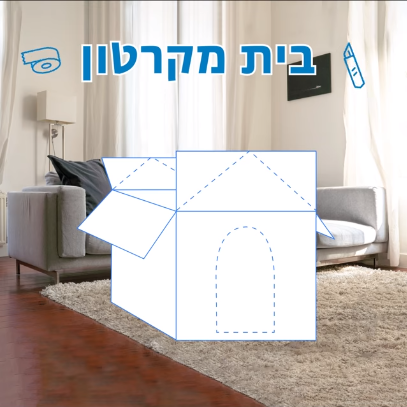
Playing a game of ‘Hide and seek’
Where is the best place to hide? Just like Mom and Yasmin, you too can play hide and seek, with toddlers hiding and parents looking for them. Were you able to find them? Then how about starting another round and inviting the rest of your family to join you?
שרים ורוקדים בעקבות הסיפור
“בַּיִת זֶה בְּסַךְ-הַכֹּל קֻפְסָה…” – צפו בסרטון שמציע לרקוד ולשיר יחד.
A piece of advice when reading to toddlers
We recommend reading the book alone first, before reading it as a family. Prior familiarity with the book helps to read it seamlessly later, at a pace suitable for toddlers. Enjoy reading this book!
A discussion on who can help
We can all help others, even toddlers. You may want to ask your toddlers how they can help others, or tell them that they are helping when it happens: “Remember when you helped me set the table?” “Look at you helping me put away the toys!”
Listening to the story
Would you like to listen to the book Noni and his Mom Walk Homefrom Kindergarten? Please scan the QR code to find a recording of this book. You could listen to it while traveling, playing, or sitting together while turning the pages of the book.
A story in illustrations
The illustrations are part of the story, and using them, toddlers identify and recognize the plot and some of its details. You may enjoy looking at the illustrations together, and searching for the items that Nomi gives his mother: ‘Where do you see an illustration of a bag?’ and ‘Where can you find an illustration of a coat?’
Playing a game of ‘An items tower’
Inspired by the items piling on top of mom in this book, you may want to take turns building a tower out of various items: Very carefully, one on top of the other, you can place building blocks, toys, hats, bags, and anything else you might want to add.
A discussion on yearning
How does yearning feel? Have you ever missed someone? Who? – This book is an opportunity for a discussion during which you, parents, can share your own experiences of missing someone and waiting for their return.
What does it mean to miss someone?
Pupik misses his father, and Ohad knows exactly how he feels. They share their feelings, and think of things they could do while missing someone. You may want to scan this QR code to watch them, and get some good advice for times when you miss others.
Arts & crafts – A yearning box
Does it feel like time is standing still while you are missing someone who is away? – You may want to make a box filled with items that could make time go by faster, and make you forget about that person’s absence for a while. How about putting some photos of the two of you in it, materials with which to make a gift or a drawing for them, which you could give to them upon their return?
A game for passing the time
A minute can go by very quickly, or it can almost stand still. Would you like to try? – Set your timer for one minute, choose an activity, and do it for a full minute: Hopping on one leg, sitting still, finding items beginning with the letter G – Which activity helped time pass by faster? And which activity made it go by extra slowly?
Reading poems
The poems in this book present small moments in life. Every time you read together, we recommend selecting one poem, and reading it together. Does the poem remind you of something that once happened? This may be a good opportunity for you, parents, to share a childhood experience with your child, creating closeness and intimacy with them.
Pleased to meet you – Hagit Benziman
When did Hagit Benziman start writing? What does she write about, and why? You may want to scan this QR code to find out more about this author and her work.
Looking through the family album
You may enjoy looking at parents’ family photo albums together, searching for special childhood moments. You could also look at early childhood photographs of the children, and share information about the moments captured. Which memories do they evoke in you?
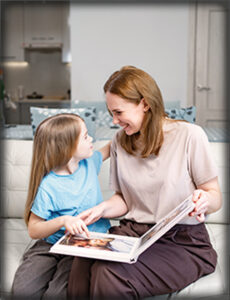
Dramatizing together
Do you have a favorite poem among those included in this book? If so, how about acting it out together, with the grownups playing the parts of the children, and vice versa.
A little advice for family reading
To make family reading enjoyable, and encourage children to read, we should choose books to which children relate and explore topics in which they are interested. Some prefer a piece of fiction, while others would want to read a story that “once was”. Whatever their favorite book may be, it would encourage them to enjoy books, while helping them to develop their imagination and creativity.
A discussion on belongings and memories
You too could look for items that remind you of past experiences: A family photo, gift you have received, or item associated with an experience you have had. Take turns introducing the object of your choice and sharing a memory relating to it.
Listening to the story
What does Grandpa sound like? Does the machine make sounds? By scanning the QR code you too can listen to the story together or separately.
Building something
Are you interested in making a machine of your own? You can gather some boxes, fabrics, crates and old toys to build your very own machine. You can plan what it would do and look like together, or simply build it and discover its attributes as you go along.
Illustrations – Where are the machines?
Many of the illustrations in this book depict machines. Perhaps you would enjoy leafing through them and finding illustrations of machines and machine parts – Can you tell what each of them does? Perhaps you could be inspired by the part you found to invent a new machine, and imagine what it is capable of doing.
Pinterest
Arts & crafts, songs and other activities are available on the Sifriyat Pijama Pinterest page
A discussion full of delight
Having read this book, you may enjoy a discussion about why, you think, Uncle Simha (Hebrew for joy) is named so. What about the things he does or says that make you smile?
Listening to My Uncle Simha
Would you like to hear a story? Go ahead and scan the QR code to listen to the book My Uncle Simha. You may enjoy listening to it together while turning the pages whenever you like.
Happy songs
Which songs make you happy? Perhaps you could make a playlist of all the songs that make your family happy, and sing along together. You could even sing in funny voices – a high-pitched voice, the deepest of basses, or a whisper – adding some dance moves for greater delight.
A confused game for a confused uncle
Take turns asking a question while the other players try to come up with a “confused” response. For example: What’s your favorite drink? Tea with a touch of mustard! What do you do when it rains? Wear sunscreen! What sound do birds make? Where should we go on our next trip?
A discussion on searching and finding
Following this book, you may want to embark on searches together with your parents, grandparents, or other relatives: What have you found? Were you surprised? Do you enjoy searching and finding?
A game of Search Cootie Catcher
A game for both seekers and finders.
Scan the QR code
Print out, cut out and fold according to the instructions.
Have you searched? Have you found? Would you like to play again?
Illustrations
This book contains both colorful and black and white illustrations. Can you figure out when the illustrations are in black and white, and when they are multicolored?
A game of “what’s missing?”
A game of “what’s missing?”
Place several items in a row and look closely.
Take turns hiding one of the items while the rest of your family members have their eyes closed. Once it has been removed and hidden, the other players can open their eyes and start searching – Which item is now missing? Where was it hidden?
Pleased to meet you, I’m Hyla!
I’m similar to a frog but smaller. I can be found in Israel, mostly on trees, eating insects and laying eggs in the water. I’m a protected species and therefore cannot be kept in a jar, only in nature.
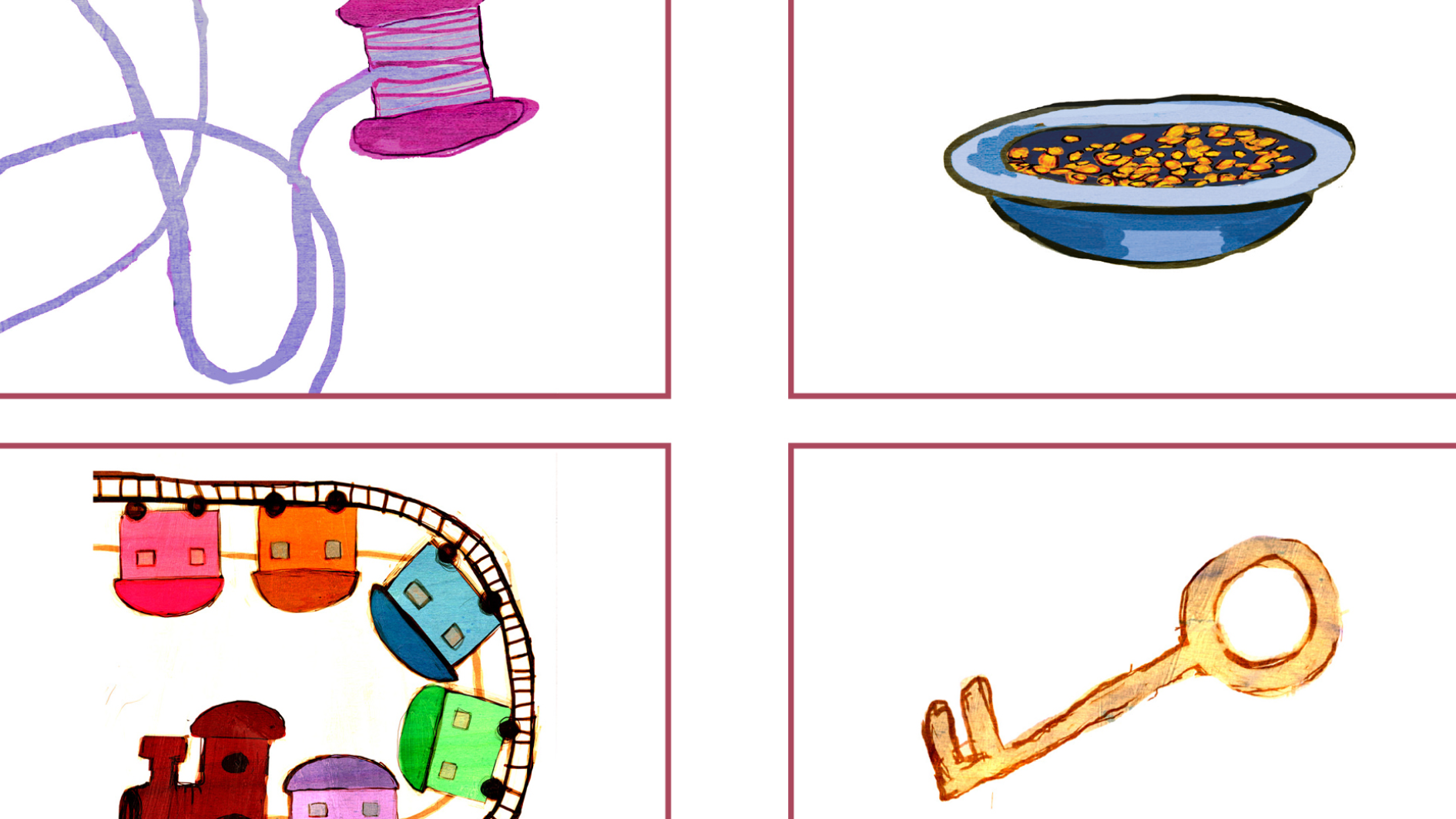
Reading Together
It is worth sharing the reading of the story with the toddlers: Where is the key? What do you do with the string, and what are the crumbs for? What surprise is hiding in the small pocket?

Guessing Game
Hide an object in a garment pocket and let the toddler guess what you hid with the sense of touch. You can provide clues, reveal a fraction of the object, and eventually disclose the item and demonstrate what it is used for.

Doing Things Together in the Family
Grandfather and the child are talking, sowing seeds, and feeding the rabbit. What do toddlers love to do with adults in the family? With grandparents and other family members?

What Goes with What?
“A key in order to open”; “A ticket to ride the train”; and what is a basket for? Or a spoon? You can walk around the house and choose items, then talk and check together what they are called and what they are used for. Matching Game –What Belongs to What – is waiting for you when you scan the code:

Pinterest – Crafts, songs and other activities on the “Grandpa’s Pockets” book page in Sifriyat Pijama on Pinterest
We can help too!
What can toddlers do at home? Many things! They can put glasses on the dining table, sweep with a small broom, feed the pets, and… offer cookies. It is worthwhile to talk and show what the toddler is helping with at home, and what else they want and can participate in.
Who is in the family?
The child in the story hands out cookies to other family members: grandmother, uncle, sister, cousin. Who are your family members? You can talk about family members, say their names and thier roles, such as: “Grandma Braha,” “Uncle Baruch,” use family photo, and use family photos.
Let’s make some refreshments together!
You too can prepare refreshments together, such as chocolate balls, a plate of fruit, or a sliced cucumber. You can prepare “pretend” refreshments using play dough and offer to the dolls at home.
Game: Grandma had cookies…
Do you know the game “Grandma made porridge”? “The child had cookies” can be played in a similar way, in which the toddler opens her, or his hand, and the parent begins to count: “The little boy/girl had cookies and gave one to Grandma (holding the thumb), and one to Uncle (holding the forefinger) etc. And so you count the fingers by allocating a family member to each one. Who will you give the last cookie to?
Discussion
Which perfect gift would you like to get for your birthday? How would you feel if you did not get it? Have you ever wanted something very badly but did not receive it? This book prompts us to discuss our expectations – why this specific gift? Do we really need it or are we simply jealous because we saw someone else has it? You may also want to discuss disappointments, and the things that help us cope with them.
Perfect gifts
How well do you know members of your own family, and what do you think would be the perfect gift for them – would it be something you buy or an experiential gift, such as time spent together, or perhaps a trip somewhere? How about playing a game and finding out? In each round, all participants try to guess what one participant would really like to get as a gift. Those whose guesses are the closest win… the perfect family hug.
A human car game
Whoever said only cars drive round and round with a cord attached? People could too! Two of you could hold the two ends of a long cord, leading one another left, right, backwards and forwards. If you get tired, make a pit stop, and start again.
Time together
“A car with Dad is the perfect gift”. And what would you consider to be the perfect gift? What would you like to do with your father or other family members? You could fix broken items, build or assemble something, or perhaps draw, bake, plant, or dance together. In fact, you can do whatever you want, as long as you get to spend time together.

Just before bedtime...
How do you get ready for bed? What helps you fall asleep? You can talk about it together and think about creating a set ritual that will engender calm, and let you share the day’s experiences and thoughts that come to mind.

My notebook of thoughts
Isn’t it lucky that there’s a way we can remember our thoughts and stop them from getting away? How do we do that? Keep a notebook and pencil by your bed, and just before falling asleep, before your thoughts scatter away, draw them. You can color in your drawing in the morning, because now… is time for bed.

It's lucky that... It's good that...
“It’s lucky that a pot has two handles, and not five… if it did, how would we hold it?”, “It’s good that the windshield is made out of glass, not cardboard”. What do you imagine? Which things make you happy just as they are? Each member of the family can bring a certain object and talk about it: “It’s lucky that…”, “It’s good that…”.

Melodies, sounds and colors
The world is filled with melodies and sounds. Which melody do you like? Try singing a favorite melody together wile clapping your hands, moving parts of your bodies, singing, or playing instruments.
The world is also filled with diverse colors and shapes. You can draw as you listen to the music. Which shapes and colors will you choose for your drawing?

Discussion
The family in this book is rushing to make the train and celebrate Grandpa Dov’s birthday, and yet its members remember to be considerate toward others, and care for animals and the environment. Perhaps you would like to try and discuss what being considerate means – how would you like others to be considerate of you? Who could you offer to help in your immediate surroundings or family? Which actions can you take to make the older members of your family happy?

Playing "fast or slow?"
You may enjoy playing a game called “fast or slow”: take turns to choose a certain action and tell the other players to perform it quickly or slowly. For instance, clap your hands… quickly, and now… slowly; sing a song extra slowly, and then super-fast! After you’ve played, you may want to discuss and discover what you enjoyed doing quickly, and what was more fun to do slowly.

Hidden illustrations
The illustrations in this book are extremely detailed. How about choosing your favorite page, and looking for the tiny details in it? Perhaps you could take turns to ask each other whether you can spot a particular detail in the drawing: Where’s Grandpa Dov’s gift? Where’s the football? Who can find the teddy bear?

Types of…
This book specifies types of plants, toys, cats, and musical instruments. Perhaps it can inspire you to take turns choosing a subject, and having the other players list as many items associated with it as they can. You could choose topics such as clothing, friends’ names, types of toys or musical instruments.
Getting [into] the picture
Would you like to go into one of the illustrations in the book? You could choose to be a guest at the home of one of the families described in this story, and imagine how it would feel to be next to the whale, or in the kangaroo’s pouch. What would you want to happen when you meet some of the characters depicted in the illustrations?
Guessing the animals
One family member can make the sound of an animal, or draw a picture of it, imitate it, or give some other kind of clue about it – and the rest can try to guess which animal they were hinting at!
Sound – imitate the sound made by this animal
Pantomime – act the animal out, walk like it or try to look like it
Picture – show or draw a small part of the animal: a tail, wing or foot.
Clue – describe some detail about the animal: where it lives, what it looks like, or the sound it makes.
Couldn’t guess? Help each other by providing additional clues.
Discussing – Why? How? What?
How did Guy feel when he destroyed Omer’s circus? And how did Omer feel when he discovered what had happened? Were you ever in a situation where you or someone you cared about ruined something for the other? How did you feel, and what did you do? Were you able to fix it? Perhaps you could discuss the feelings that emerge when something is ruined, and when you discover it can be fixed.
Toy Improvement – Time to fix some toys
Is one of your games broken? Has the paint peeled off? Perhaps a nail has come loose? Then it’s time to fix it! Make a list of all the things that need to be repaired around the house, then pick an item at a time, and fix it. You could even make new things out of old ones. An old sock can become a puppet! An old box can be painted and decorated with colorful paper and stickers…
A home circus
Circuses make children’s and adults’ imaginations run wild, and can be the setting for many fascinating occurrences. You may enjoy building your own circus at home, and acting the story out using the appropriate outfits and accessories. You could even be inspired enough to write a brand-new script about what goes on in a colorful circus.
Fixing yourself some arts & crafts
Torn pieces of paper can be turned into a piece of art! Color some pages in various colors, then tear them up into small pieces. You could also use newspaper cuttings or scrap paper. Next, make a painting together on a blank piece of paper by sticking the colorful, torn pieces onto it, and creating a mosaic!

יש לכם קופסה? יש לכם משחק!
יש לכם קופסה? יש לכם משחק! צפו בסרטון וגלו איך להכין משחק קופסה מתוק מדברים שיש בכל בית, בעקבות הספר “המתנה” מאת אַנְיֵיס לָרוֹשׁ!

Reading & discussing
Once you have finished reading the book, you could discuss what Michael (originally: Nicodème) did: Why did he want to give his mother a present? What do family members give one another? And what would you like to get from yours? Would you like to receive material gifts, such as toys, or are there “gifts” of conduct, intimacy, and friendship that you would like to give and receive?

Looking at the illustrations
Some of the special illustrations in the book are black and white, while others are colorful. You may enjoy looking at them with your child and discovering: which illustrations did the illustrator choose to color? Why did he choose to color those items instead of others? Would you have chosen to color a different item?

Creative fun – What's in the box?
We readers do not know which gift is contained in the box that Michael (originally: Nicodème) gives his mother. Perhaps the book is trying to tell us that it’s the act of giving that matters most. However… wouldn’t you love to know what was in there? Well, how about making a giftbox by taking a box, decorating it, and covering it with giftwrap. You could use the box to play a game called “What’s rattling in the box?”: Collect some “rattling” items, and place one in the box at a time. Then let each of the participants shake the box, listen to the item rattle inside, and try to guess what it is.

The gift of waiting
Michael (originally: Nicodème) waited patiently for this day to come, but many children find the wait a difficult challenge. You may want to share some waiting experiences together at home: making pastries with yeast, baking cookies, etc. or playing waiting games like the staring game. How patient are you?
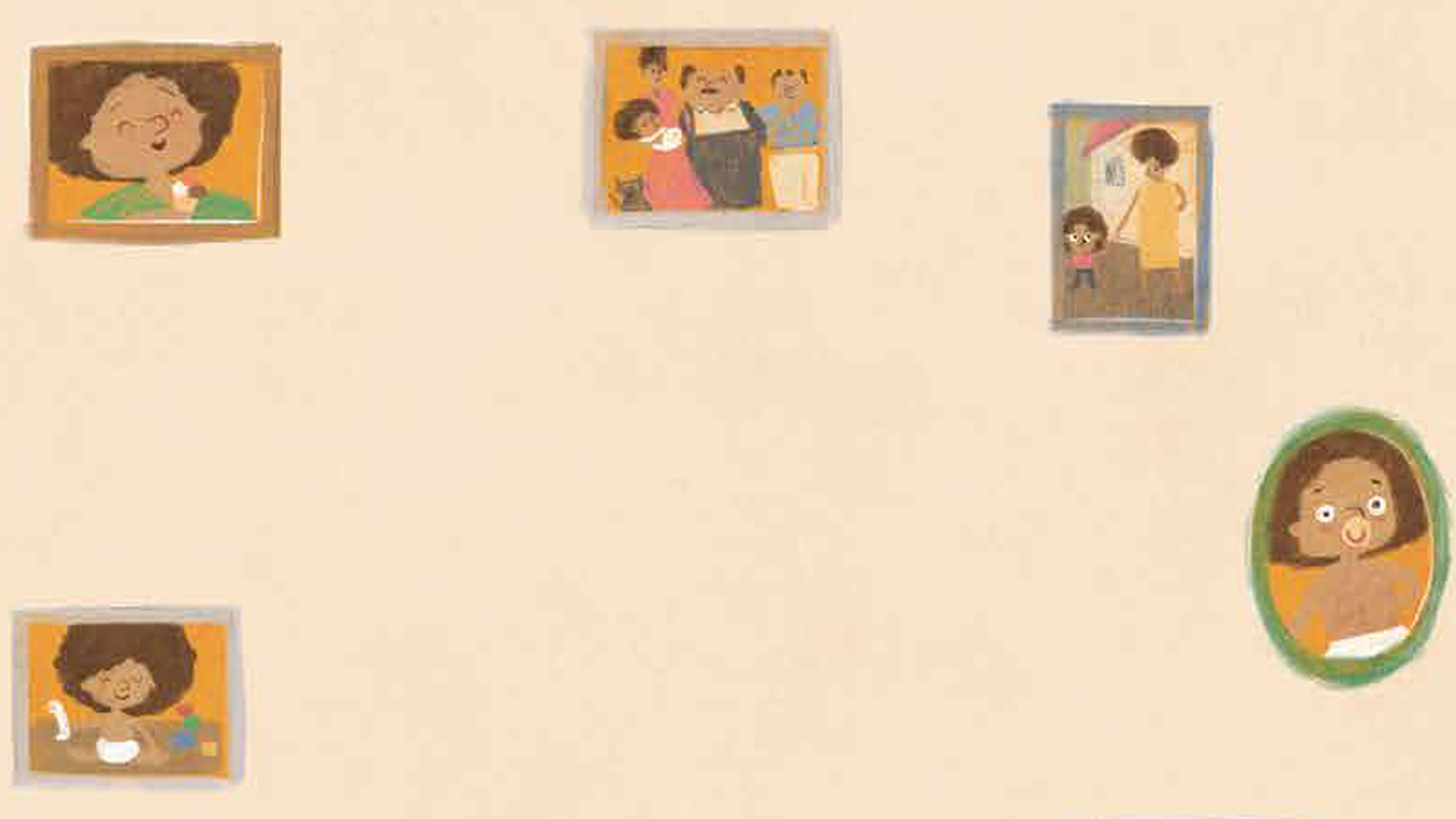
Discussing – Names and stories
Who likes their name? What is the story behind your family members’ names? Are there other family members who have the same name? or strange names? Are you named after anyone? You may want to do some research among your extended family. Who knows the stories you will uncover…

Observing – Where is Arie?
Shahar Kober’s illustrations invite us to follow Arie, and join him as he enters his family story. Can you find Arie in the different pages of the “Book of Aries”?
You may enjoy looking at old family photos of events that happened “once upon a time”: look through the pages of a photo album together, listen to the stories behind the events depicted in them, and choose one photograph you wish you could enter.

Doing some arts & crafts – A family book
How about creating your own family book, an album that will tell your story and that of your children, just like the Book of Aries in this story. Take a blank notebook, and collect stories from your grandparents, aunts, and uncles. Write down their memories from the time you were babies, funny words you said, or some special behavior. We recommend collecting such stories about both parents and children in your family. You should put in old photos and mementos from kindergarten, daycare, and the time when you were tiny babies.
Proposed Family Activities:
- You may want to leaf through the book and look at the illustrations together. You could ask your child to tell you the story in their own words, according to the sequence of illustrations.
- Perhaps you could build a tent out of bed sheets and blankets, go into them with your child, and read the book together there.
- You may enjoy playing a “reverse role” game: have your child read you a bedtime story, sing you a lullaby, tuck you in, and kiss you good night.
- You may want to act the story out using two puppets, representing Amalia and Mommy, as well as other puppets or stuffed animals. In your show, who will fall asleep first?
- You could share childhood memories with your children: did you share a room with your siblings? Who put you to bed? Did they tell you stories or sing you lullabies? Did you sleep with a certain stuffed toy or teddy bear?
This is the last book you and your child will be receiving from PJ Library this year. You may want to walk over to your bookshelf and be reminded of all the books you received. Do you have a favorite one? We wish you a wonderful storyful summer. See you next year!
Proposed Family Activities:
- You may want to ask your child to leaf through the book and look at the illustrations. You could ask them what the sparrows are doing on each page, how they travel to their aunt, and where each of them falls asleep at night.
- Perhaps you could play the following game: take turns pointing at an illustration, while the other attempts to mimic the sparrow depicted.
- You will find many new words in this book! It may be fun to repeat the verbs used to describe the sweet sparrows’ actions. Does your child recognize the names of the musical instruments and modes of transportation?
- Do sweet sparrows fly in the vicinity of your home too? You may enjoy going for a walk around the neighborhood, looking up at the skies, and searching for birds. Can you hear them tweet too?
- Every member of the family can chip in and help run the family home. Many children find joy in the performance of simple tasks. You may want to ask them to set the table for dinner, help clear the plates away when it is over, put away their toys, and more.
- Does your child know the song Hineh mah tov uma naim? Perhaps you could sing and dance together. Or how about setting up a family band with home-made musical instruments? A rattle made of a jar full of dried beans, a guitar made of a shoebox and some elastic bands, and drums made of pots with wooden spoons for sticks will make for a fabulous family performance!
Proposed Family Activities:
- You may want to leaf through the book together. Did you find anything about the illustrations amusing? You may want to ask your child to use them in order to identify the different characters’ activities.
- At the end of the book, the entire family sits down for a Shabbat meal together. Can your child identify each character as it sits round the table? You may want to ask them to point at some of them, and try to remember the two activities each of them likes to do.
- You may enjoy holding a Shabbat meal for some toys using plastic dishes. You could ask your child who to invite, what the toys should have, what they can do while dining together, and what is best not to do while sitting around the table.
- You may want to try doing different things at the same time, like singing and playing ball, showering while listening to a story, or putting toys away while clapping. Were you able to do both?
- You could discuss your family with your child. Ask them when you usually get together for a meal, and what you usually do on Shabbat.
Proposed Family Activities:
- You may want to snuggle up and look through the book together. You could follow Tani’s facial expressions and ask your child: How, do you think, Tani felt when his sister chose to give Mama a flower?
- We suggest pausing at the page on which Tani announces that he, too, needs a box for his gift, and asking your child: what will Tani’s gift for his mother be, do you think? What gift would you like your child to prepare for you?
- You could act the story out using puppets. Together, you can imagine what the puppets will do with their mother at the end of the play.
- Perhaps you could play a game called “what’s the gift?”. Each player in turn picks a toy or small object and puts it in a box. The other players try to guess what is in the box by asking questions and receiving clues. For example: Is the gift an animal? Is it something yummy? Is it made of wood?
Were you able to guess which gifts were hiding in the boxes?
- You may want to tell your child how you honored or are currently honoring your own parents, and remind one another of the ways in which your child honors you. Together you can think of an older family member you could honor – perhaps by giving them a flower or hug, or surprising them with a phone call.
- How about choosing a box and decorating it with stickers, drawings, and ribbons? Perhaps you could decide together to whom you will now give it.
בדיוק אותו דבר – דתיה בן דור – מתוך "פרפר נחמד"
בדיוק אותו דבר – דתיה בן דור – מתוך “פרפר נחמד”
הכנת קיפוד מנייר – סרטון הוראות הכנה
A recipe for Tali's Grandma's apple pie
Ingredients
2 eggs, whisked
2 apples, peeled and diced
2 tablespoons of brown sugar
1 tablespoon of cinnamon powder
I cup of self-raising flower (or 1 cup of regular flour and a teaspoon of baking powder)
2/3 cup of white sugar
½ cup of oil
A pinch of salt
Method
Pre-heat the oven to 180 degrees.
Mix the diced apples with the cinnamon and brown sugar.
Whisk the eggs and white sugar together, and add the rest of the ingredients.
Mix the batter well.
Bake for 30-40 minutes until the pie is firm and golden.
Serve hot next to a scoop of vanilla ice cream.
Proposed Family Activities:
- You may want to look at the illustrations closely together. You could ask your child to pick a character, and tell the story from his/her perspective.
- Perhaps you could ask your child what Shira did by joining Tali under the table. You could share ideas for ways out of situations in which you feel angry, sad, or upset. You may want to share an experience in which you helped cheer someone up.
- It is not always easy to discern how others are feeling. You may enjoy standing with your child in front of the mirror, taking turns to make faces, as the other guesses which emotion those faces are designed to convey.
מה עשתה שירה
אפשר לשאול את ילדיכם מה עשתה שירה כשהיא הצטרפה לטלי מתחת לשולחן. אפשר גם לשתף זה את זה בשאלה מה עוזר לכל אחד מכם לצאת ממצבי כעס, עצב או עצבנות. תוכלו להיזכר בפעם שעזרתם למישהו ושיפרתם את מצב הרוח שלו.
לא תמיד קל לזהות את הרגשות של האחר
לא תמיד קל לזהות את הרגשות של האחר. תוכלו לעמוד עם ילדיכם מול המראה, כל אחד בתורו יעשה פרצוף מול המראה, והשני ינסה לנחש איזה רגש הוא מביע.
Proposed Family Activities:
- Shulamit’s facial expressions change throughout the book. Perhaps you can look at the illustrations together, and pay close attention to those changes. When does her smile disappear? And when does it reappear?
- In the illustrations depicting the story that Shulamit tells herself, she seems very small compared to the tall buildings and her surroundings. You may want to ask your child for their opinion as to why Ora Ayal chose to draw Shulamit so small, inquire whether they ever feel small, or alternatively, when, if ever, they feel big.
- Perhaps your child could “read” the story to you, even if they cannot yet read the text. You could also act the story out together. Try switching roles: you can play Shulamit, who goes from room to room, asking members of her household to read her a book; while your child can play the other characters, explaining that they are currently unavailable.
- Many children find it difficult to keep themselves busy while waiting for their parents to spend time with them. You may want to use an alarm clock or hourglass to mark the end of your child’s “alone time”, and plan which book you will read together when it is over.
- Perhaps you could invent your own story, taking turns. One of you begins with “Many years ago in a faraway land…”, and you go on taking turns, adding characters and plotline, until you reach the end of the story. You could even write up and illustrate the story, and make a small book out of it.
- A Girl all be Herself is about experiencing both loneliness and togetherness. Having read the book, you may want to discuss feeling lonely with your child. You could tell them that we all feel that way sometimes, and think of coping methods together.
- Do you know any other books written or illustrated by Ora Ayal? You may want to look for more of her books at home or in the public library, and read them alone or together.
- Shulamit asks her household members to read her a story in the afternoon, “just like she always does”. Do you also have a certain time for reading books and storytelling? Is it the right time for everyone? Having read this book, you may want to schedule a “family story time”, starting a new family tradition.
Ora Ayal
Ora Ayal 1946–2011
Ora Ayal wrote and illustrated more than 70 children’s books. She illustrated many books written by top Israeli children’s authors, such as Miriam Roth (Tale of Five Balloons [Maʹase Ba-Chamisha Balonim], Hot Corn [Tiras Ham], and Yael’s House [HaBayit Shel Yael]), David Grossman (the book series on Itamar), and Ronit Haham (Five Witches Went for a Walk [Hamesh Mekhashefot Halkhu Letayel]). Among the books Ora Ayal both wrote and illustrated are: One Tuesday Morning [Boker Bahir Ehad]; Ugbu; and The Great War [HaMilhama HaAdira]. Her illustration style is simple and easily identified, and her well-loved books have been a source of delight for thousands of Israeli children. Ora Ayal has won many awards, among them the Andersen Children’s Literature Award, and the Ben-Yitzhak Award.
Look Together
You may want to look at the illustrations together, and compare Gal’s home and kindergarten to the area in which Grandpa Raphael lived so many years ago. Together you may enjoy imagining what your life would have been like had you lived in another place, at another time. If you happen to have old pictures documenting the roots of your own family, you could show them to your child, and try to identify your family members together, as well as the places in which they lived back then, and now.
The Meaning of My Name
Does your child know why they were so named? Having read this book together, you may want to share the meaning of their name with them, and the story leading up to choosing it for them. You could also tell them what made your parents so name you.
Our Village Todgha
Do you know the tune to the song Our Village Todgha by Yehoshua Sobol performed by music group Habreira Hativ’it (The Natural Selection)? Perhaps you would like to sing it together with your child
Remember Together
Just like Gal, many children enjoy listening to stories about the past. Do you remember any festive occasion from your days in kindergarten and school? Perhaps you could share your learning-related childhood memories and family traditions with your child.
Fun with letters
Young children learn from enjoyable activities, such as licking honey-dripping letters. There are many ways of teaching the alphabet: you could put names and words together from various materials, cut out letters from newspapers, identify familiar letters that appear on signs and packages, play word games, and so on. The most important thing is to have fun while you learn!
Have a Great Summer!
Sweet Aleph-Bet is the last book on the PJ Library books list for this year. We hope you have enjoyed the books, and wish you an enjoyable summer, and a smooth beginning in your new kindergarten or school!
A recipe for sweet Aleph-Bet letters
Ingredients:
2/3 cup of soft butter
2/3 cup of sugar
1 egg
1 teaspoon of vanilla extract
2 cups of flour
1 teaspoon of baking powder
½ teaspoon of salt
Method:
- Whisk the butter and sugar until you get a somewhat fluffy batter. Fold in the egg and vanilla extract.
- In a separate bowl, mix the flour, baking powder and salt.
- Combine the two mixtures and knead until dough is crumbly. Knead crumbs into a ball, cover it with saran wrap, and keep refrigerated for an hour.
- Pre-heat oven to medium heat (180°C).
- Flour your worktop and use a rolling pin to flatten your doughball. Use letter-shaped cookie cutters to cut cookies out of the dough.
- Place the cookies on a baking pan, and bake in the oven for 10 to 12 minutes, until edges turn golden.
Proposed Family Activities:
- You may enjoy reading this book together and asking for your child’s opinion – do they think this story really happened? How did the friendship between the shoemaker and the Emir “save” Jerusalem? Perhaps you could choose one elderly friend or member of your family, and suggest that your child interview them about their childhood. The interview can be recorded, drawn or written down, to be kept for posterity.
- This story takes place in Jerusalem at the beginning of the 20th Which characteristics of Jerusalem can you identify in the illustrations? You may want to look for other pictures of Jerusalem from the same period, and compare it to contemporary ones: does Jerusalem still look this way? What about it has remained the same, and what has changed?
- The narrator’s grandfather was a craftsman, a shoemaker. Perhaps you would enjoy discovering the occupations in which your family members engaged in past generations. Is any of the professions passed down from one generation to the next? You may want to create a family tree, and draw a symbol of each family member’s profession alongside their name.
- Many last names provide information about one’s family history. Does your last name hold a clue about an ancestor’s occupation? Or the place from which your family immigrated to Israel? Or any other past family characteristic?
- By squeaking, the boots remind the Emir of the help he received from his friend, the shoemaker. Perhaps you can remember someone who once helped your family. What reminds you of them? Together, you may want to think of ways to make them happy.
- Many past professions are disappearing – milkmen, watchmakers, blacksmiths, streetlamp lighters, etc. Can you think of any other occupations that no longer exist? Perhaps you could imagine together what the world would be like if other professions we now have will no longer be required. Which occupations might come in their stead?
The five senses
The five senses: You may enjoy reading this book together, and trying to discover with your child how sight, hearing, taste, smell and touch help Alicia’s mother preserve her memory of the snow she misses so much. Can you find where all five senses appear in the story together?
When we were kids…:
When we were kids…: Alicia’s mother misses her childhood snow. What do you miss? Which of your childhood stories does your child know? What has changed since you were kids, and which of your child’s experiences are similar to the ones you have had? Perhaps this story could prompt you to share your childhood memories with your child, and compare your experiences.
Aliyah stories
Aliyah stories: You may want to search for your family members’ country of origin in the atlas together, and trace their journey to Israel. Which challenges and successes did they experience on the way? What do they like about Israel, and what about their faraway country do they miss? You could look for old pictures, clothes or other items, and share family immigration stories with your child.
Remembering with your senses
Remembering with your senses: Alicia’s mother says snow has a taste and smell. Perhaps you would like to close your eyes and go on a journey together; remembering the scents, flavors, sounds and sights of the swimming pool or beach in summer, of rain on the window pane in winter, of home on the eve of a Holiday, and so on. You could choose one shared memory and draw it together.
A personal gift – not just on your birthday
A personal gift – not just on your birthday: how do we pick a good gift? We try to understand what others like, and might make them happy! Perhaps you could think of a family member or neighbor, and make them a special, personal gift that would surprise and delight them.
Memory box
Memory box: Perhaps you might like to take a walk around your house and yard, and try to think what you would remember about them in a few years’ time. What would you miss? You may enjoy making a memory box together, and filling it with the scents and tastes of home – a much-loved family recipe, soap-scented stationary, a family photo, and other memories that would be fun to remember in the future.
Proposed Family Activities:
- In Gilad Soffer’s illustrations the piano turns into a shark, and the umbrella is transformed into an eagle. You may want to look at the illustrations together, and notice the various household items, and the amusing shifts between reality and make-believe. Perhaps you would like to pick an item or piece of furniture in your own home, and draw what it turns into in your imagination.
- Which rooms and pieces of furniture are on your child’s way to bed, what is their route to the bedroom? You may also enjoy making a game out of bedtime, and choosing a funny walk, dance or other movement – perhaps even carrying your child on your back. Who would buy your “sack of flour”?
- Yonatan is deterred by the elephant drawn on the carpet. Sometimes items look different in the dark. You may want to ask your child whether there are any items or pieces of furniture in your house that look different at night. You could discuss their fears together, as well as ways to overcome them.
- How does your child get ready for bed? Do you have a special ritual – a hug and kiss, a prayer, or a song that accompany your transition from daytime to nighttime? Do you read a bedtime story together? Following this book, you may want to invent a new ritual by which to say goodbye to the departing day.
- Perhaps you would like to share some childhood memories with your child: Did you share a bedroom with any of your siblings? Who put you to bed? Were you told any stories or sung and lullabies before bedtime? Did you sleep with a specific doll or teddy-bear? Perhaps you can think of a funny story about bedtime from your past to tell your child.
- At Yonatan’s house, a piggyback is called “a sack of flour”. In some Israeli homes, it’s called “Abu Yoyo”. Does your family have any special names for childhood games? Did you have any special childhood games where you came from? This may be an excellent opportunity to teach your child these games.
Who Wants a Piggyback is the last PJ Library book you will be receiving this year. We hope you have enjoyed the books, and wish you a wonderful summer, and a smooth transition to kindergarten or school!
Proposed Family Activities:
- You may want to join Noga and her father by acting the story out. Every time Noga meets an animal, you could do as she does: spread out your wings like a butterfly, crawl like a tortoise, or roar like a lion.
- Guess who: you could play charades, mimicking an animal, and letting the other guess which one you are.
- Reading the illustrations: you may want to suggest that your child leaf through the book and tell you the story by the order of the illustrations.
- Do you drive to kindergarten together, or walk? What do you see on your way? Who or what do you come across? Perhaps you might like to pay attention to flowers, trees, buildings, or even find large and small animals.
- Do you also have a game that helps you pass the time enjoyably on your way to kindergarten?
Here is a list of ideas for games you can play on your way:
- Parent hums a tune and child tries to guess it and sing along.
- You could decide what to look for on your way (certain color cars, a cat, bird, or police car).
- You’re welcome to gallop, skip, or jump all the way to your kindergarten gate.
- Perhaps you would like to pick a certain mode of transportation (airplane, tractor, motorbike), and parent can put child on their shoulders and pretend to get to kindergarten on it.
- You could play a memory game to familiarize yourselves with the route: what will we be seeing next? A store, a tall building, a tree, and so on.
- You could collect something on your way, such as special shaped leaves or rocks.
Family Activities
- Jack Kent wrote and illustrated this story. If you pay attention you’ll notice that the illustrations don’t always match the text of the story. When reading the words, “There’s no such thing as a dragon”, ask your children to check to see if “There’s no such thing as a dragon” also appears in the drawings. You may want to discuss with the children: What describes the reality better – the words of the story or the pictures?
- The pictures in the story present details beyond the plot that is described in the text. It would be fun to go over the illustrations with your children and point out the dragon’s actions in each
- Billy sees something that his parents don’t see. Is it possible to see something that nobody else sees? You may want to play “What’s Hiding in the Scribble?”: Each person in turn draws an abstract picture and the next person tries to identify in it a familiar image or object, add missing details to it and color
- Take this opportunity to discuss the feelings of the various characters in the story with your children. You may consider together: Why didn’t the mother want to relate seriously to what Billy had to say? How, in your opinion, did Billy feel when his mother didn’t believe him? You can expand the discussion to include something that happened to you or your children. Did any of you ever experience an incident in which someone didn’t believe you?
- You are invited to invent your own “dragon” or scary creature. Billy’s dragon mostly likes to eat and to sleep, and he calms down whenever someone pats him. What does your creature like?
- How is it possible to cope with scary dragons? Many tales have been written about heroes who fight with dragons and overcome them. Do you know any other stories about dragons? Following the reading and activities with this story you can tell them to your
- Concerns in a person’s heart – should we ignore them, or deal with them directly? How do you tend to cope with things that concern you? Use this opportunity to share something that worried you when you were a child, and tell your children how you overcame your
Family Activities:
- If you carefully follow the text and illustrations of the story, you will surely note the different paths taken by the words and the pictures. Read the story again with your child. Each time you arrive at the sentence “Meanwhile, Hannah Banana rushed on her way…” ask your children to describe what they see in the picture. Is Hannah Banana really rushing? What does she do and whom does she meet along the way to Granny’s house?
- Did you notice the cat who accompanies Hannah Banana on her way to Granny’s house? You can ask your child to point out the cat on each page, and ask them how they think Granny will greet him when he arrives at her house.
- You can play the finger game “One Little Piggy” with your child. According to the story, who “had none” at the end of the rhyme?
- Hannah Banana’s Granny Cooked Porridge is actually two stories that happen at the same time. You can act out the stories with your child. First ask your child to be Hannah Banana on her way to grandmother’s house, while you pretend to be Granny. Then you can change roles. If other family members or friends are with you, they can be included in the skit as well and take on the roles of the neighbors.
- “To each his own”: At the end of the story we discover that Hannah Banana doesn’t even like porridge! You can ask your children if they believe this, and discuss which foods they like in particular and what they don’t really like.
- You can explain to your children that “Hannah Banana” is a nickname. Do your children have a nickname or a special name that only some people use when addressing them? If so, do they like their nickname?
Here is a simple recipe for delicious, sweet porridge:
Ingredients: 1 cup water, 2 cups milk, 3-4 tablespoons semolina, 3 tablespoons sugar, cinnamon, butter
Preparation: Cook the water, milk, semolina and sugar over a low flame, stirring constantly. Bring to a boil. The porridge is ready when the mixture is boiling and the semolina is cooked. Sprinkle with cinnamon and add a dab of butter. Bon Appetite!
Suggested Family Activities
- Do your children have a favorite doll or stuffed animal? After reading together the story about Maya and her kangaroo, you can discuss the special feelings we have toward objects, toys or stuffed
- You can take a picture of your children holding their stuffed animal, print out the photograph and decorate a frame for it. The framed photograph will serve as a memento in future years and will remind your children of the special relationship they had with the doll when they were
- The illustrations that accompany the story hint at changes in the blue kangaroo’s feelings, as more and more stuffed animals join him in Maya’s bed. You can flip through the pictures with your child and ask them to describe how they think the kangaroo feels on each
- Each night before going to sleep Maya recites “I love you, Blue Kangaroo”. Even when new dolls and toys are added, she ends her recitation with the same line. How do you get ready for bed? Do you have a special bedtime song, recitation or ceremony?
- You might want to discuss with your children why they think Maya agreed to share so many toys with her baby brother, but woulddn’t give away the blue kangaroo. Do your children have toys or dolls that are easier to share, and others they refuse to part with?
- Together with your children you can look for the pictures of Maya’s baby brother. You can tell the story through his eyes, and try to think how he feels as the story
- Maya and the blue kangaroo have a special relationship, which is not weakened as new dolls are added. Do you and your children have special relationships with family or friends? You can talk about this with your children, and reinforce their confidence in your feelings toward them.
- The gifts that Maya receives throughout the story are new and shiny, while the old kangaroo is old and worn. Sometimes we too prefer things that are new and shiny, and it can be hard to decide what to give up. The story can lead into a family discussion on loyalty, weighing considerations and making difficult
- The blue kangaroo feels crowded in Maya’s bed, but many times it is warm and cozy to lie together in bed! You can cuddle up and read books together in bed, and following this story, add more and more dolls and stuffed animals. You can also sing together fun songs like “Shovavim Bamita” by Datia Ben-Dor:
מסיבת פיג'מות בגן
כדאי לערוך מסיבת פיג’מות בגן, יחד עם ההורים אחרי שעות הגן או עם הילדים בלבד בשעות הבוקר, ולקרוא יחד את הסיפור. אפשר לקשט את הגן עם תפאורה של כוכבים וירח ולהזמין את כולם להתכרבל יחד, ליהנות מהאיורים הרכים שמלווים את הסיפור ולעקוב אחר מסלול החיבוק.
חיבוקים
אילו סוגי חיבוקים מקבלת לוסי מבני המשפחה השונים? בקבוצות קטנות אפשר לשאול את הילדים אם גם הם אוהבים לתת ולקבל חיבוקים, ממי ומתי?
להזמין את הילדים לחשוב על דרכים שונות להביע רגשות
חיבוק הוא דרך ללא מילים להביע אהבה. אפשר להזמין את הילדים לחשוב על דרכים שונות להביע רגשות כשאוהבים (חיבוק, אמירה, ציור, פרח, מתנה…), ולהכין יחד הפתעה להורים בעקבות הסיפור – ביטוי בלתי צפוי של אהבה.
להציע לילדים והורים לצייר את מסלול הפעולות הקבועות לפני שהולכים לישון
מה עושים בני המשפחה של לוסי לקראת שעת השינה? כדאי להיזכר בפעולות של כל אחד מבני המשפחה בסיפור. האם הילדים יכולים לנחש מה עושה אבא של לוסי, ומדוע הוא מרים את הידיים באוויר? מה עושים התאומים כשלוסי ניגשת אליהם? האם משהו משתנה אחרי החיבוק? אפשר להציע לילדים והורים לצייר את מסלול הפעולות הקבועות לפני שהולכים לישון (למשל: צחצוח שיניים, סיפור, חיבוק ונשיקה).
חיית מחמד בבית
הכלבה אנני מתוארת כ”שובבה”. במה מתבטאת השובבות שלה בסיפור? אפשר להמציא דברים “שובבים” נוספים שהיא עושה. האם גם לילדי הגן יש חיית מחמד בבית? אפשר להזמין אותם להביא תמונות ולספר עליהם.
האם הבית של לוסי דומה לבתים של ילדי הגן?
כדאי להסתכל על העמוד שבו רודפת לוסי אחרי אנני. נסו לנחש ולדמיין מה יש בכל חדר. האם הבית של לוסי דומה לבתים של ילדי הגן? במה הוא דומה, במה הוא שונה? בהמשך אפשר לבקש מהילדים וההורים לצייר או לצלם תמונה של פְּנים הבית שלהם. מי ישן באיזה חדר? אילו צעצועים וחפצים משותפים לסיפור ולבית שלהם?
כדאי להתכרבל יחד
כדאי להתכרבל יחד, ליהנות מהאיורים הרכים שמלווים את הסיפור ולעקוב אחר מסלול החיבוק. אילו סוגי חיבוקים מקבלת לוסי מבני המשפחה השונים? אפשר לשאול את ילדכם: האם גם החיבוקים במשפחה שלכם שונים זה מזה? האם כולם נעימים? האם ילדכם אוהב לתת ולקבל חיבוקים?
חיבוק הוא דרך ללא מילים להביע אהבה
חיבוק הוא דרך ללא מילים להביע אהבה. אפשר לחשוב יחד על דרכים שונות להביע רגשות כשאוהבים (חיבוק, אמירה, ציור, פרח, מתנה…), ולהפתיע זה את זה בביטוי בלתי צפוי של אהבה.
מה עושים בני המשפחה של לוסי לקראת שעת השינה?
מה עושים בני המשפחה של לוסי לקראת שעת השינה? כדאי להיזכר בפעולות של כל אחד מבני המשפחה בסיפור. האם ילדיכם יכולים לנחש מה עושה אבא של לוסי, ומדוע הוא מרים את הידיים באוויר? מה עושים התאומים כשלוסי ניגשת אליהם? האם משהו משתנה אחרי החיבוק?
שובבים
האם לפני שראיתם את האיור של אנני ניחשתם מי היא? אנני מתוארת כ”שובבה”. במה מתבטאת השובבות שלה בסיפור? אפשר להמציא דברים “שובבים” נוספים שהיא עושה. האם גם לכם יש חיית מחמד? האם גם היא אוהבת חיבוקים? האם לפעמים גם היא מתנהגת בשובבות?
לנחש ולדמיין מה יש בכל חדר
כדאי להסתכל על העמוד שבו רודפת לוסי אחרי אנני. נסו לנחש ולדמיין מה יש בכל חדר. בהמשך אפשר לצייר או לצלם תמונה של פְּנים הבית שלכם. מי ישן באיזה חדר? אילו צעצועים וחפצים משותפים לסיפור ולבית שלכם?
לשוחח על המשפחה שלכם
בתמונה האחרונה בספר רואים את הילדים ואת אנני ישנים, ואת אמא ואבא של לוסי יושבים יחד על הספה עם התינוקת. אפשר לשוחח על המשפחה שלכם. מי הולך לישון קודם? במה עסוקים המבוגרים אחרי שהילדים הולכים לישון?
האם למשפחה שלכם יש פעולות קבועות לפני שהולכים לישון
האם למשפחה שלכם יש פעולות קבועות לפני שהולכים לישון (למשל: צחצוח שיניים, סיפור, חיבוק ונשיקה)? האם תמיד הולכים לישון בלי ויכוחים? בעקבות הסיפור אפשר לשוחח על שעת ההשכבה אצלכם, ואם רוצים – ניתן ליזום מנהג חדש למעבר בין יום ללילה.
Family Activities
- Spend some time together examining Gad Shkedi’s illustrations. Notice the many different animals featured in the illustrations, alongside the trees. Compare the various trees: how many trees are mentioned in the story? Which are fruit trees, and which don’t bear any fruit? Did you notice that the end of the story is toldusing only illustrations? Tell the story in your own words.
- Do you perhaps have a favorite tree in your own yard, or near your home? Does your favorite tree have a “story”? You could take your children on a “tree tour” in your neighborhood. Can you spot any of the trees that appear in the story? Can you identify other types of trees? Compare the various trees you find: what is the benefit of each kind? Which trees are decorative, and which bear fruit? How do we know if a tree is young or old? You might pack this book, a blanket, and a light picnic, and read the story together in some lovely spot outdoors, under a tree. Then (if local environmental regulations allow) you could gather fallen pine-cones, bits of tree bark, leaves, etc., and use them to create a work of art when you get back home.
- In the story, Hannah wants to climb a tree “now,” and her father wants to rest “now.” For many families, this situation is all too familiar. How do you respond when there are conflicting desires in your family? You might discuss things we want immediately vs. things for which we must wait, along with the need to consider others’ wishes and to be patient.
- Trees provide us with an abundance of good things. You could go from room to room in your home and try to identify everything that comes from trees, for example: furniture made out of varying kinds of wood, olive oil that we use in cooking, maple syrup from the sap of the maple tree, wine and raisins harvested from grape vines, and so on.
- Do you know any other stories about trees (for example: the traditional tale of “Honi the Circle-Maker and the Carob Tree,” featured below; the poem “The Tree Man” by Shlomit Cohen-Assif; “Mr. Mini and the Apple Tree” by Orit Raz, or “What Do We Need For…” by Gianni Rodari)? Look for these books at home or at the library, and read them together.
- In Jewish tradition, it is customary to plant a tree to mark important milestones in one’s life. How does your family celebrate or remember important occasions and people? Does your family plant trees to mark a birth and/or other major occasions in your lives?
- Various Jewish source texts compare humans to trees. Talk with your children about your family’s roots, about the” seeds” you are planting for the future, about the different branches of your family, and so on. You might also draw your own family tree, from the grandparents’ generation down to your children’s generation.
- Just like trees, we humans also need a firm foundation in order to grow and flourish. After reading the story, you might have a conversation with your children about the things that matter most to you —your values, deeds, traditions, and beliefs—that strengthen the “foundation” of your family’s tree and support your collective growth.
Have fun reading and discussing this book!
ראיון עם המאייר אסף בן ארוש על תהליך יצירת הספר
ראיון עם המאייר אסף בן ארוש על תהליך יצירת הספר
Oded Burla [1915–2009]
Israeli author, poet, painter and illustrator, Oded Burla was born in Jerusalem to a Sephardi family who lived in Eretz Israel for more than 13 generations. His father, Yehuda Burla, wrote adult books and won many awards. Oded Burla attended the agricultural school at Mikveh Israel, followed by the Bezalel Art Academy. His first book was published when he was 45, and he since wrote and illustrated more than 70 children’s books, which, he claimed, contained 346 different animals! Burla was named the father of nonsense in Hebrew Children’s Literature. His humorous books are sophisticated and filled with surprising and amusing wordplay. Oded Burla has won awards for his work: the Zeev Award, ACUM Award and Bialik Award.
Family Activities
- How do we portray a melody? You may want to notice how illustrator Assaf Benharroch chose to draw the melody, and how it changes throughout the story. Perhaps you’d like to suggest that your child draw your melody together with you.
- Do you sing lullabies at home to your children? Do you remember a lullaby your parents sang to you when you were young? Share a lullaby you know with your child. You may want to renew this beautiful family custom, and sing together before bed.
- Do you know melodies that have no words? You may want to sing some with your child. To complete the experience, you may enjoy dancing together, and even making up your own words to this tune.
- Oded Burla wrote and illustrated many children’s books, among them A Smile in every Corner and Oded Burla’s Big Book. You may want to look for his works in the library or online, and enjoy reading them together.
- The plot of the story is straightforward and can easily be turned into a play. You may like to act it out with your child. Your child can play the part of the melody, and other members of the household can be the different characters in the book. You may want to add some more dialog to the story, in which the melody explains to the various creatures why they should sing.
- The mountain in the story has no need for the melody because “mountains don’t sing”; whereas the trees tell the melody: “We have our own songs”. According to Rabbi Nachman of Breslow, each blade of grass has its own song. By this he means that every creature in the world has a voice and melody of their own. Naomi Shemer wrote a beautiful tune to Rabbi Nachman of Breslow’s Song of the Grass. You may enjoy listening to it and singing along.
Family Activities
You may want to look at the illustrations that accompany the story together, and notice the many details that are not specified in the text. What do you think of Bonny’s ideas and Pop’s inventions?
You could invent, plan and build your own “magnificent tree” using building blocks or Lego, or various objects around the house or yard. Are “all sorts of things jutting out” of your work too? Send us a picture of your magnificent tree, we’d be happy to post it on our website.
Bonny and Pop realized that birds were attracted to trees and looked for an idea that would encourage the birds to visit them. The story may inspire you to make a bird feeder together: rinse a large, empty bottle thoroughly, cut a large opening out on one end of it, hang it in the balcony or on a nearby tree, and fill it up with pieces of cut fruit, seeds and breadcrumbs. Follow the birds, watching quietly from afar as they approach the bird feeder and eat from it.
“Bonny and Pop always had lots of ideas…” Little children often have big ideas and original thoughts. You may want to tell your child about some important inventors, in Israel and around the world, and remind them that they too were once children, brimming with ideas. Together you could think of a situation in your own lives that you’d like to change, and make suggestions. Are your ideas implementable?
“Just as their faces are not identical to one another, so their opinions are not identical to one another” (according to the Midrash on the Book of Numbers, chapter 21): family members and friends do not always think or act the same way, and sometimes differences in style and character can bother us. You may want to remind each other of each of your family members’ special talent and inclinations, and make note of the unique contribution each one makes.
Does your child have a special connection with a grandparent, aunt or uncle, like Bonny does? You may want to sit your child down with a beloved family member and invite them to engage in an activity that requires cooperation, such as putting together a jigsaw puzzle, or even baking a cake. How well did they work together? Did they have similar ideas or different ones? Remember, none of this matters, as long as we have fun spending time together!
Look at the illustrations together
You may like to look at the illustrations together, where many details appear that are not mentioned in the story. What do the siblings like to do while their father works in the field? What are the animals in the story doing? Perhaps you’d like to find the illustration where the father tells them he does not remember where the treasure is buried. What do the children imagine finding there? You may want to ask your own child what they regard as a “treasure” and what they might have hoped to find in the field, had they been promised a treasure.
!Your child can work the land
Your child can work the land, even at home! Together you may enjoy making seeds sprout, or planting bulbs, avocado pits or potatoes, whether in a flowerpot or in the ground. Water it, look after it, follow its growth. It requires effort and cooperation, just like in the story – maybe in the end you’ll grow a “treasure” too?
!A treasure at home
A treasure at home! You may want to suggest that your child make their own treasure chest. You could hide the treasure in a room in the house and play “treasure hunt”. Draw illustrated notes with clues on them and help your child get closer to the hidden treasure from one note to the next.
Talk about the different roles in your family
The farmer’s three children work together, and each one makes suggestions and comes up with good ideas. Perhaps you’d like to talk about the different roles in your family: what is each family member good at?
"He who works his land shall have plenty of bread"
“He who works his land shall have plenty of bread” (Proverbs 28:19): In the field the brothers plough, sow, reap… in Hebrew there are many words that describe farming! You may like to look at the illustrations, and identify together which action is being performed in each one and compare the tools, then and now.
The story depicts the changing seasons
The story depicts the changing seasons: Does your child know which season is most suitable for sowing and harvesting? Which is yours and your child’s favorite season, and why? Perhaps you’d like to suggest that your child draw a picture depicting themselves in their favorite season.
Family Activities:
- Perhaps you would enjoy looking at the illustrations and finding clues for the holidays mentioned in the story: Sukkot, Hanukkah and Purim. You could discuss the holidays in your family together: what do you especially like about each holiday? With whom do you spend them? Does your child have a favorite holiday?
- When you read the story for the first time, did you guess where Grandpa was taking little Hannah? Does your child also share a special relationship with an older member of the family? You may want to ask the elderly members of your family how they used to celebrate Passover. Which special customs or dishes did they have at home? Did they also sing Ma Nishtana as children on Seder Night?
- How do you celebrate Passover in your family? Does your child also have a special role to play on Seder Night? You may want to create a holiday scrapbook together, and suggest that your child draw the family celebrating together on Seder night and throughout the holiday.
- Does your child know any Passover songs, traditional or new? Can they sing Ma Nishtana? You may enjoy singing Passover songs together.
- On Seder Night, Hannah realizes that being the littlest Levine is the best. You may also want to discuss issues of big and small in your family. Ask your child what they would have liked to do on their own, and think of tasks in preparation for Passover that your child can do themselves. Children are happy and love to help – it would be wonderful if you could give them the opportunity to feel all grown-up!
Family Activities
- “Daddy says ‘Brush your teeth’ / Daddy says ‘Clean out your ears’…”
You may want to play charades and, rather than read the dialogue in the story, act it out without using any words. Can your children guess what the little boy’s daddy said?
- Perhaps you’d enjoy looking at the illustrations and discovering all the little boy’s stuffed animals and other toys. What sort of stuffed animals do you have? Do you also take them to bed with you at night? You may want to follow the illustrations and find out what happens to the toys when they lose the game (they go to sleep!)
- You can also play this game, often known as ‘Simon Says’: you each play the role of the king in turn and give others various instructions. If you begin by saying “The king says…”, the other players must follow your instruction; however, if the “king” orders you to do something without first saying “The king says…”, you do not follow the order. Did you get mixed up? You’re out of the game, and must wait until a new king assumes the throne.
- The little boy in the story pretends to be king and makes up new rules: in his kingdom you’re allowed to jump on beds, fly, be a giant, and ride wolves. You may want to use your imagination together, and think of things you’d like to change in your world. For instance, what would happen if we were to go to school at night and sleep in the daytime?
- The little boy in the story gets ready for bed having brushed his teeth, showered and kissed his father good-night. How does your child get ready for bed? Do you have a ritual, prayer or song that accompanies you as you transit between day and night?
- You may like to share memories from your own childhood with your child: did you share your bedroom with your siblings? Who tucked you into bed at night? Were you read bedtime stories or sung lullabies? Perhaps you went to bed with a doll or teddy-bear. Do you happen to remember a funny story from your past that is related to bedtime?
Proposed Family Activities
- Each member of Ury’s family suggests another humor-filled interpretation of his utterings, all of which have been illustrated by Ora Ayal. You may enjoy looking at the illustrations together, and suggesting that your child draw their own interpretation of what Ury said.
- Jonathan hears half a word and understands what Ury meant. You too can be “interpreters”: pick an object in the room and say the first half of its name. The “interpreter” must then guess what you were referring to. Once they’ve guessed, you can switch roles.
- Jonathan is five years old, “which is exactly in between being small and being big”. This may be a good opportunity to ask your child when they enjoy being small, and when they prefer being big.
- Isn’t it fun to speak a language only you can understand? You could invent your own vocabulary and write it in your own private dictionary. How would you say “it’s dinnertime”? Or “good morning”? or “I’d like a kiss”?
- Brothers can help one another at any age. You may want to share a childhood experience with your child in which you experienced or did something with a sibling. Grandparents are also welcome to share sibling stories.
- Many remember their children’s delightful mispronunciations when they first learned to speak. Do you? Your children will surely love to hear them. You can write them down here for them to remember:
- After you have read the story, you may want to visit a nearby art museum or gallery with your child. You could also go online and look at images from art exhibitions across the globe.
- Bezalel Art School is well-known in Israel today, but few know the name Boris Schatz. Many people have done great things but are not remembered for them. Try to think of a person in history that you have heard of or know about, whose story you would like to share with your child. You could create a short book about this person and send it to us. Enjoy reading and discussing the story together!
Proposed Family Activities
- You may enjoy looking at the illustrations together. Which toys do Noam and Elad play with? What does your child enjoy playing with – be it with their siblings, friends, or on their own?
- “Noam didn’t mean to fight with Elad, Noam didn’t mean to slap his hand”: You may want to ask your child how it is that Noam did not mean to fight and slap? Have you ever had a similar experience?
- We all make mistakes sometimes. You may want to share an incident with your child in which you felt the need to say you’re sorry. Was it difficult for you to do? How did you feel after apologizing?
- You may enjoy looking at the final illustration, and reflect together about the final lines of the story. Why are both brothers happy? Who, in your opinion, is happier?
- Noam and Elad are brothers, but they’re also best friends. Who is friends with your child? What do they enjoy doing together? After reading this story, you may want to invite a friend of your child’s over to play.

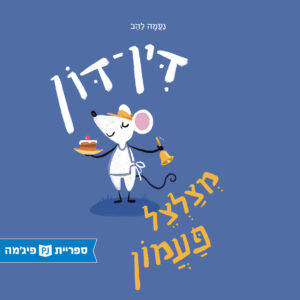 The Dinner Bell
The Dinner Bell 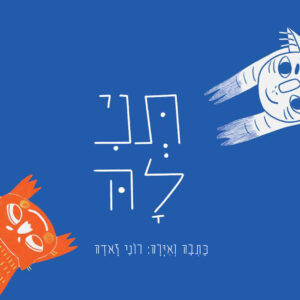 Let-Her
Let-Her 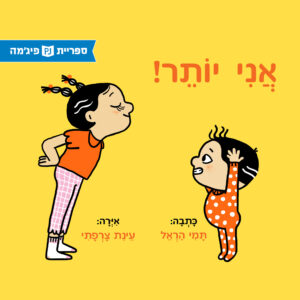 I’m More
I’m More 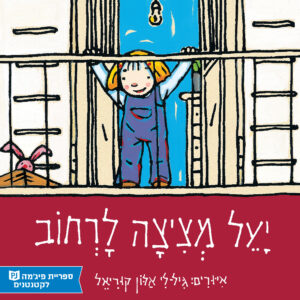 Who Is Passing By?
Who Is Passing By? 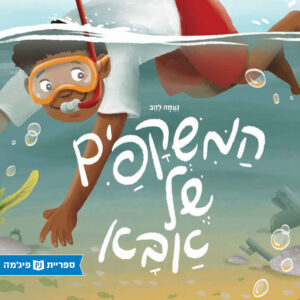 Aba’s Glasses
Aba’s Glasses 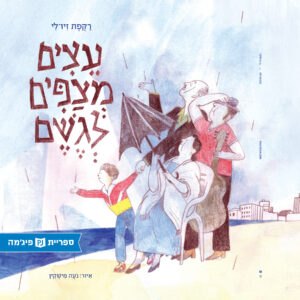 Trees Wait for Rain
Trees Wait for Rain 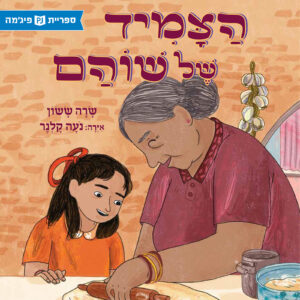 Shoham’s Bangle
Shoham’s Bangle 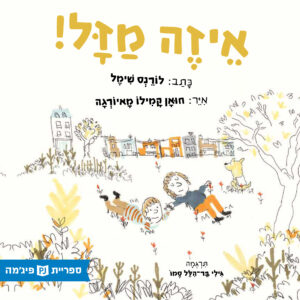 How Lucky I Am
How Lucky I Am 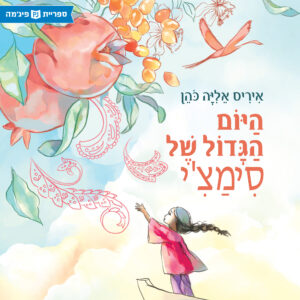 Simachi’s Big Day
Simachi’s Big Day 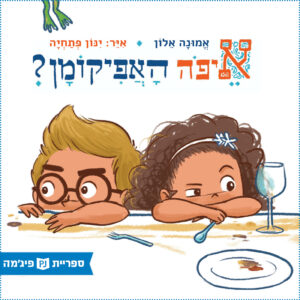 Where is the Afikomen?
Where is the Afikomen? 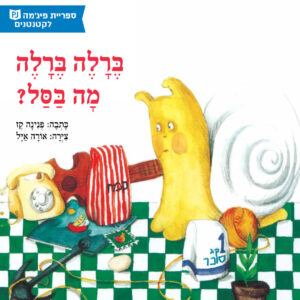 Berale Berale What’s in the Basket?
Berale Berale What’s in the Basket? 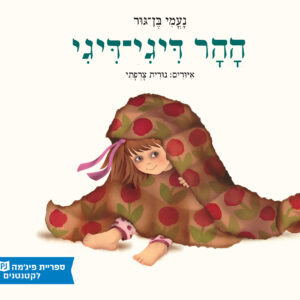 The Hill Tickle-Tickle
The Hill Tickle-Tickle 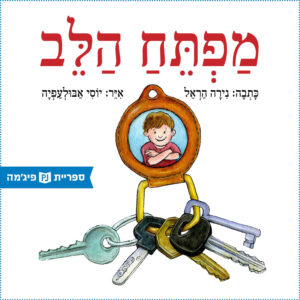 The Key to My Heart
The Key to My Heart 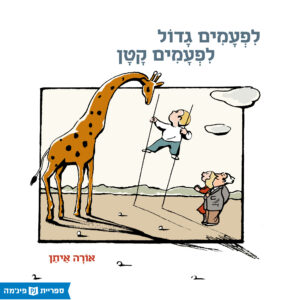 BIG OR SMALL
BIG OR SMALL 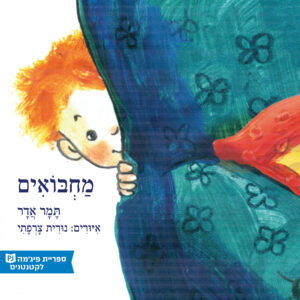 Hide & Seek
Hide & Seek 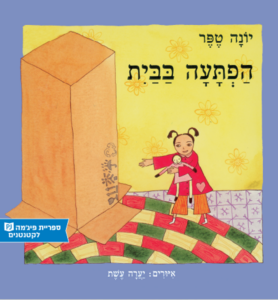 Surprise at Home
Surprise at Home 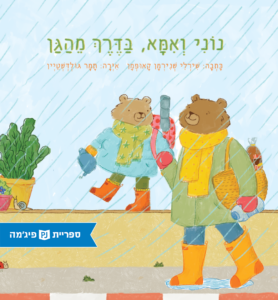 Noni and his Mom Walk Home from Kindergarten
Noni and his Mom Walk Home from Kindergarten 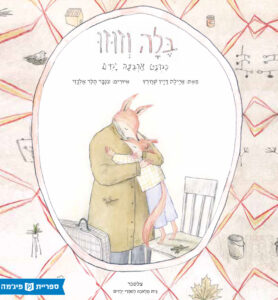 Bella and Zouzou
Bella and Zouzou 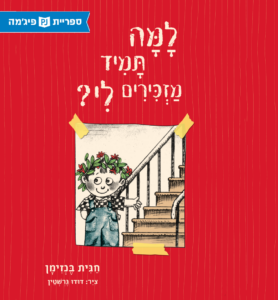 Why Do They Always Remind Me?
Why Do They Always Remind Me? 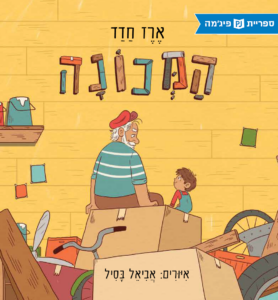 The Machine
The Machine 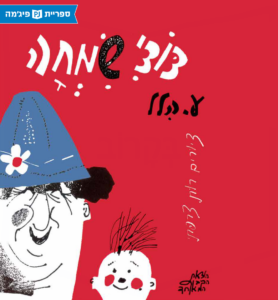 My Uncle Simha
My Uncle Simha 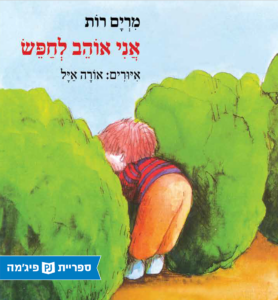 I Like to Look For…
I Like to Look For… 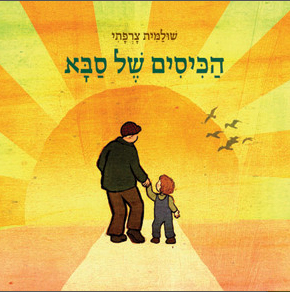 Grandpa’s Pockets – For Families
Grandpa’s Pockets – For Families 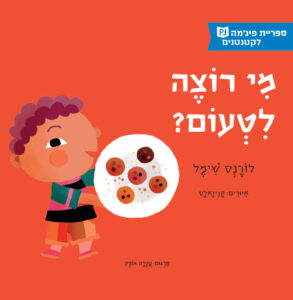 Who wants to taste?
Who wants to taste? 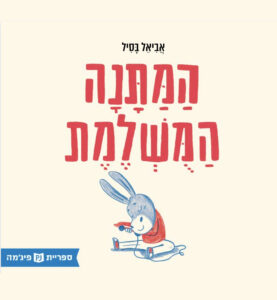 The Perfect Gift
The Perfect Gift 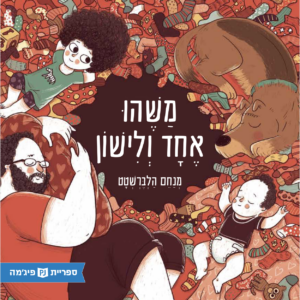 One Last Thing before Bed
One Last Thing before Bed 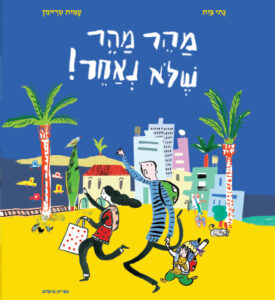 Hurry Up!
Hurry Up! 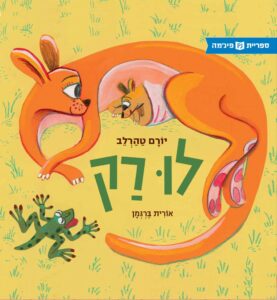 If Only
If Only 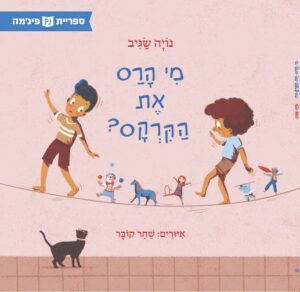 Who Destroyed the Circus?
Who Destroyed the Circus? 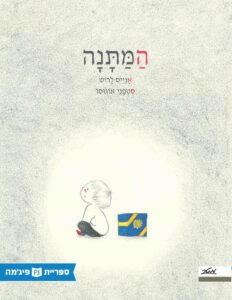 The Gift
The Gift 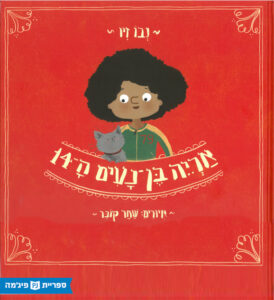 Arie Ben Naim XXIV
Arie Ben Naim XXIV 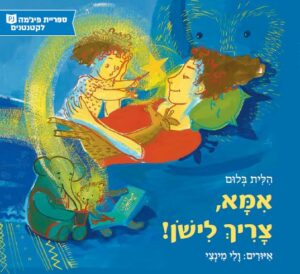 Mommy Time to Sleep
Mommy Time to Sleep 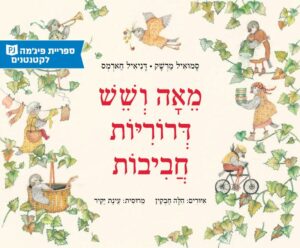 One Hundred and Six Sweet Sparrows
One Hundred and Six Sweet Sparrows 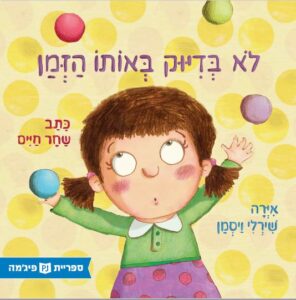 Not at the Exact Same Time
Not at the Exact Same Time 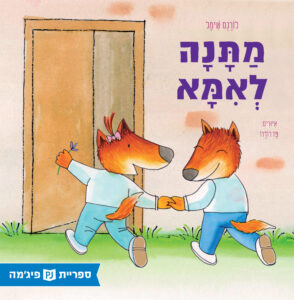 A Gift for Mama
A Gift for Mama 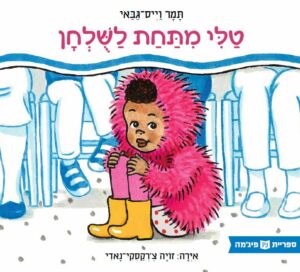 Tali is under the Table
Tali is under the Table 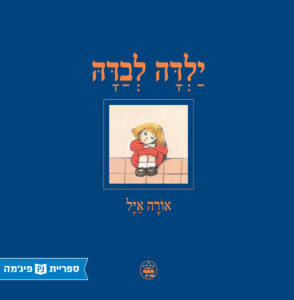 A Girl all by Herself
A Girl all by Herself 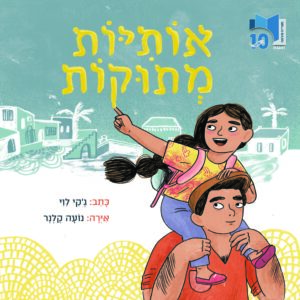 Sweet Aleph-Bet
Sweet Aleph-Bet  The Boots that saved Jerusalem
The Boots that saved Jerusalem 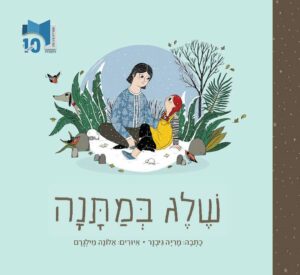 A Gift of Snow
A Gift of Snow 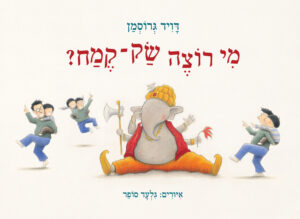 Who Wants a Piggyback?
Who Wants a Piggyback? 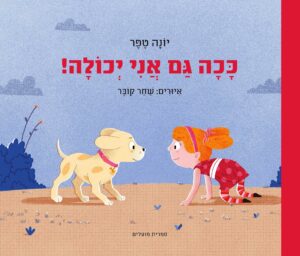 I Can do it too!
I Can do it too! 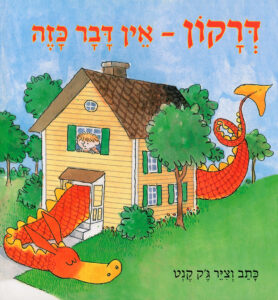 There’s No Such Thing as a Dragon
There’s No Such Thing as a Dragon 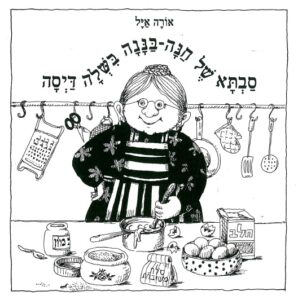 Hannah Banana’s Granny Cooked Porridge
Hannah Banana’s Granny Cooked Porridge 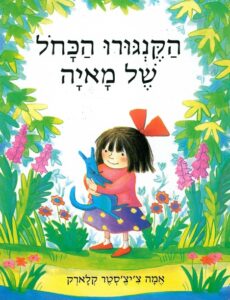 Maya’s Blue Kangaroo
Maya’s Blue Kangaroo 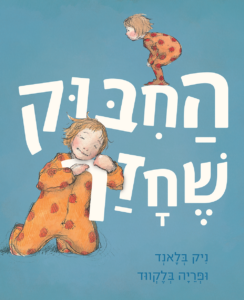 The Runaway Hug
The Runaway Hug 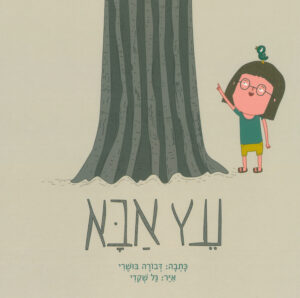 The Daddy Tree
The Daddy Tree 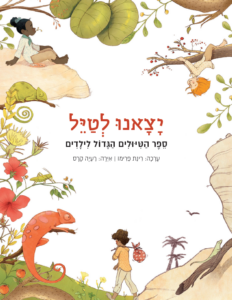 The BigBook of Trips
The BigBook of Trips 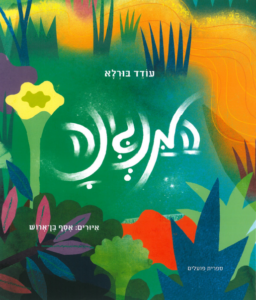 The Melody
The Melody 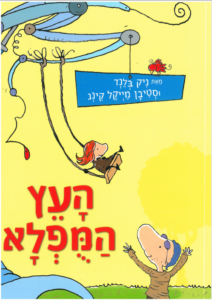 The Magnificent Tree
The Magnificent Tree 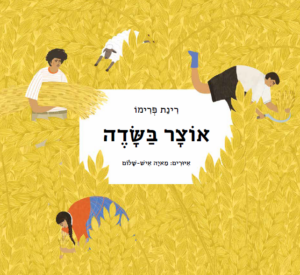 A Treasure in the Field
A Treasure in the Field 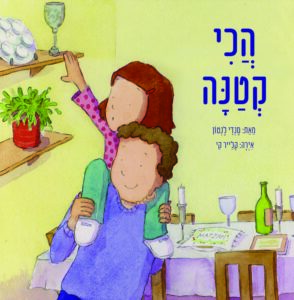 The Littlest Levine
The Littlest Levine 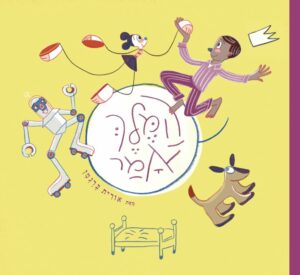 The King Says
The King Says 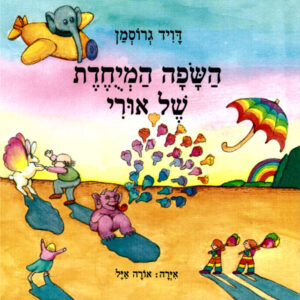 Ury’s Special Language
Ury’s Special Language 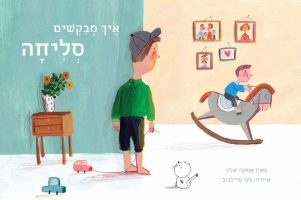 How do you say “I’m sorry”?
How do you say “I’m sorry”? 














